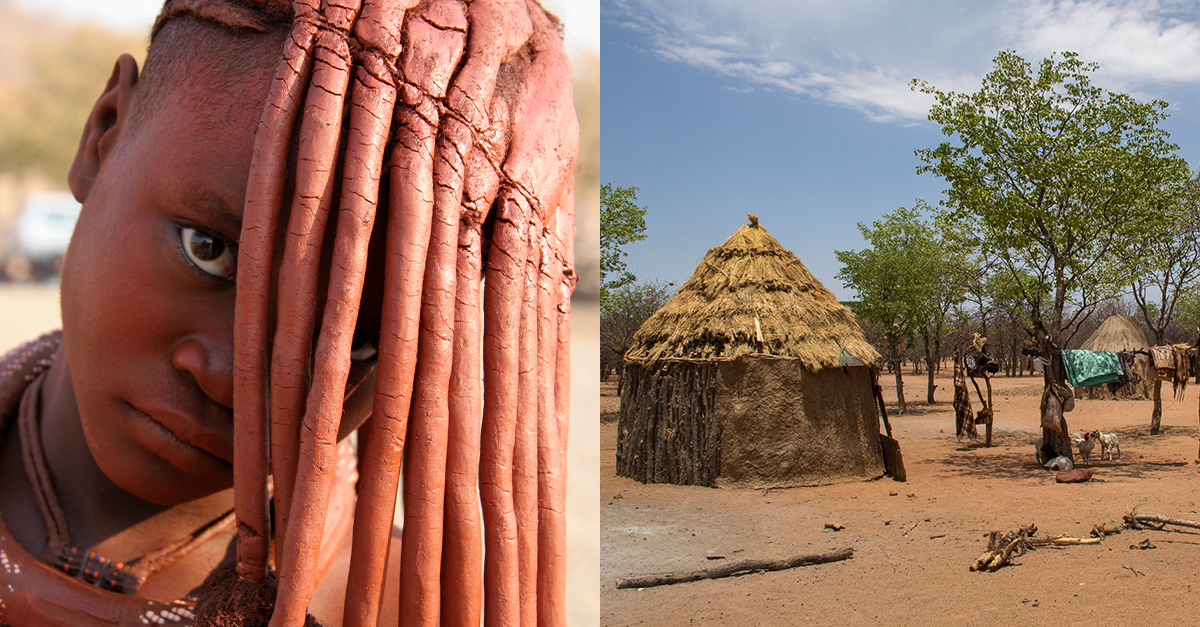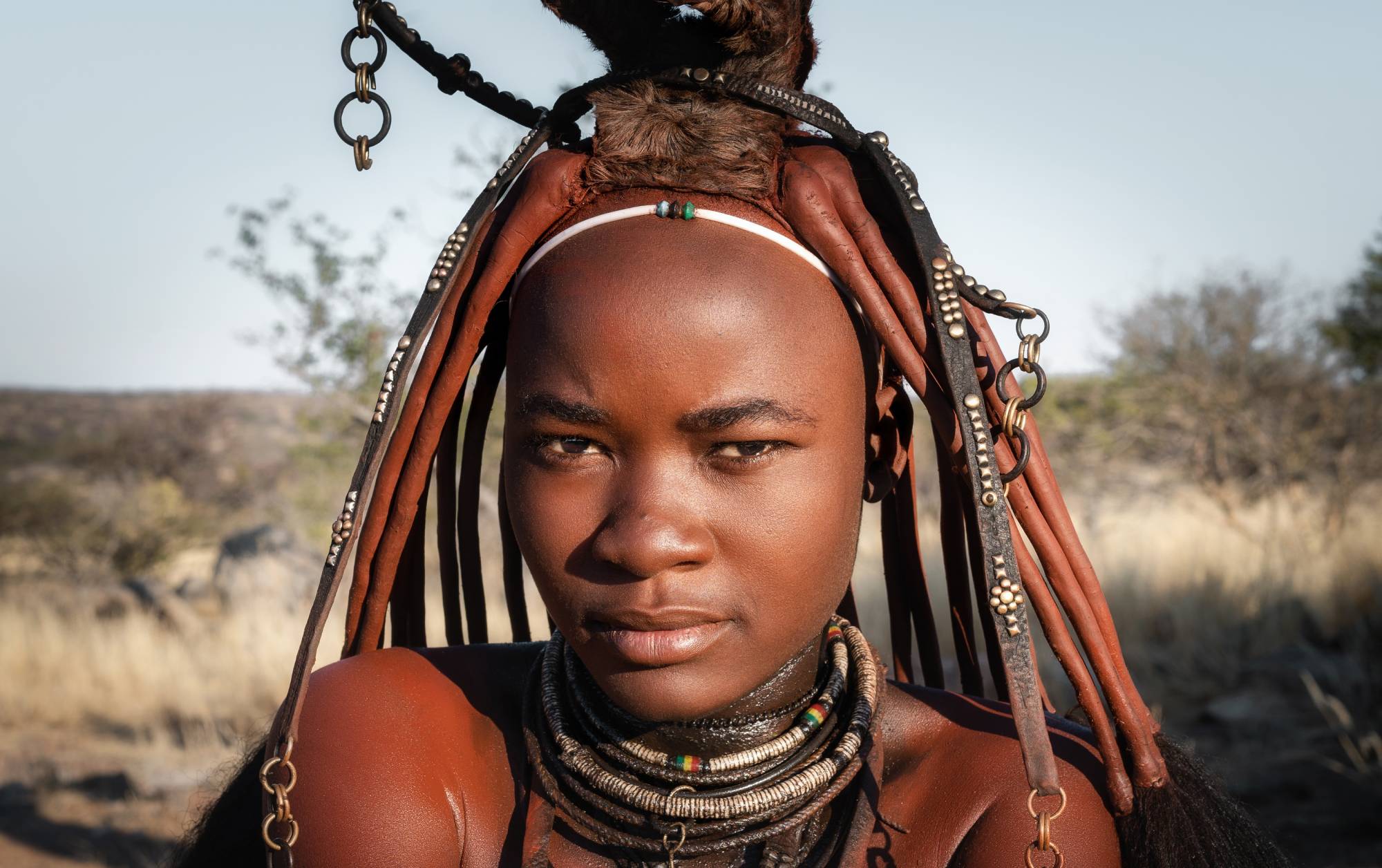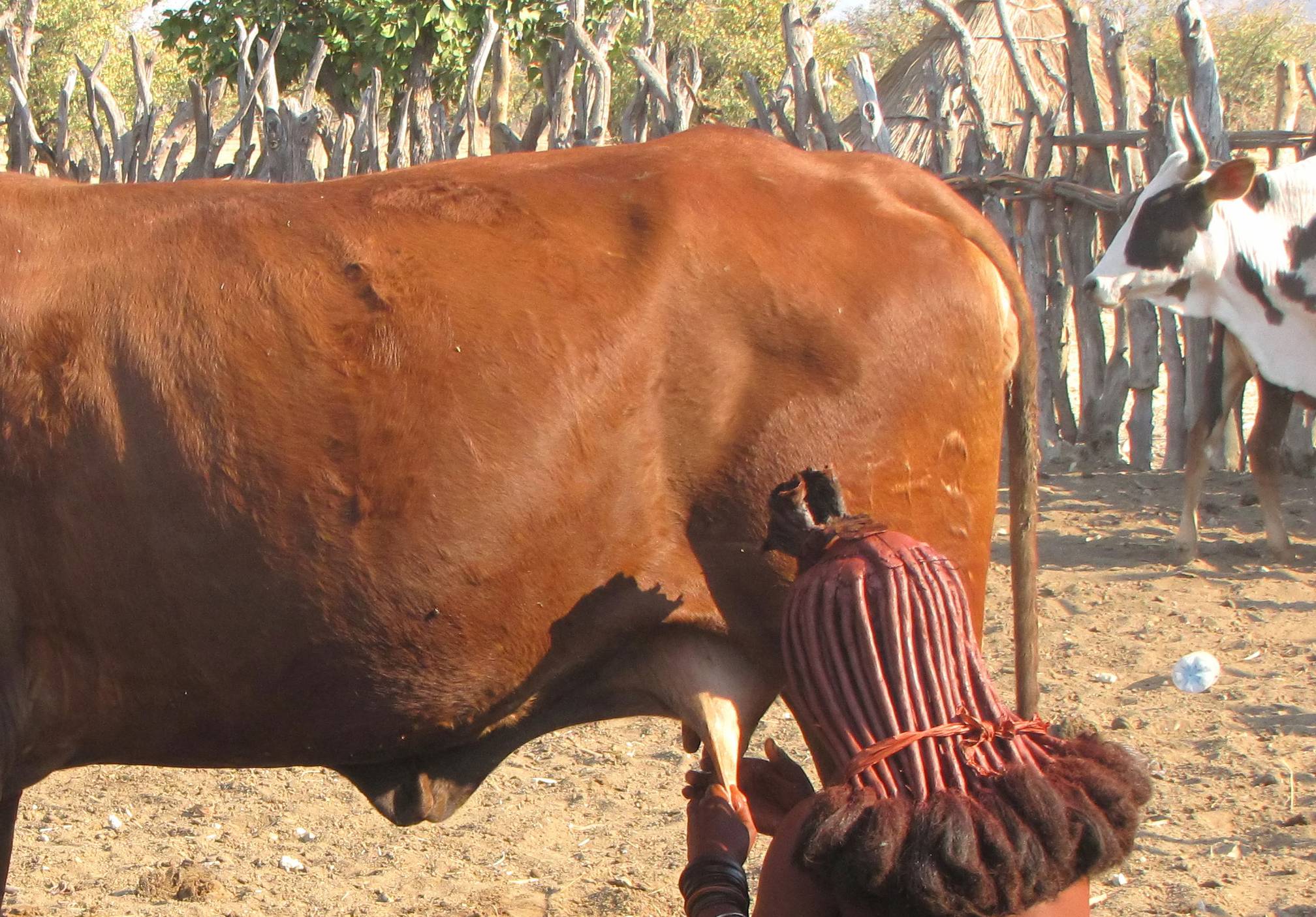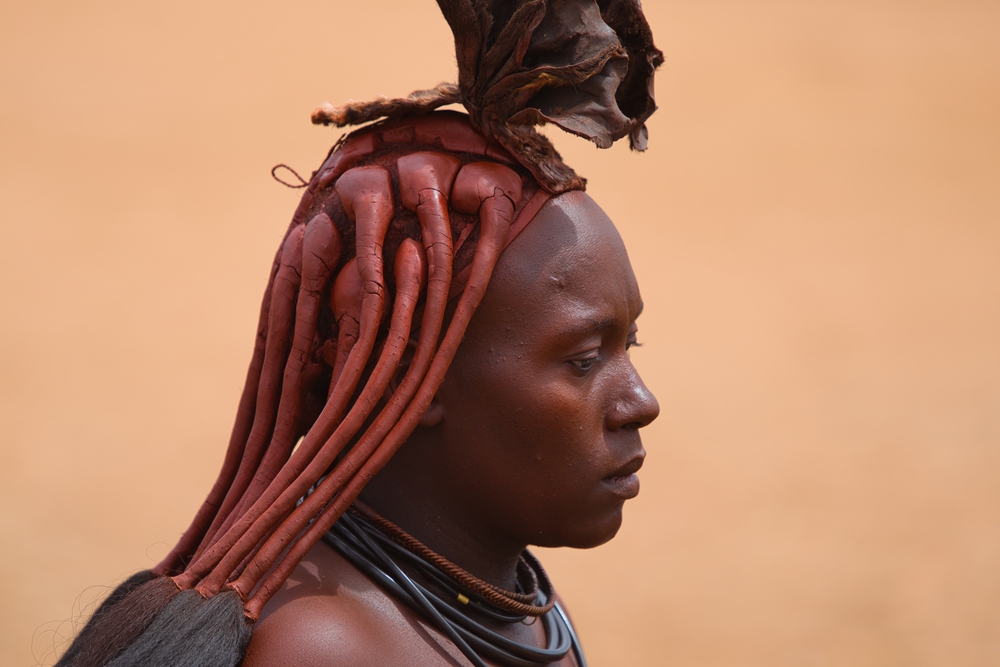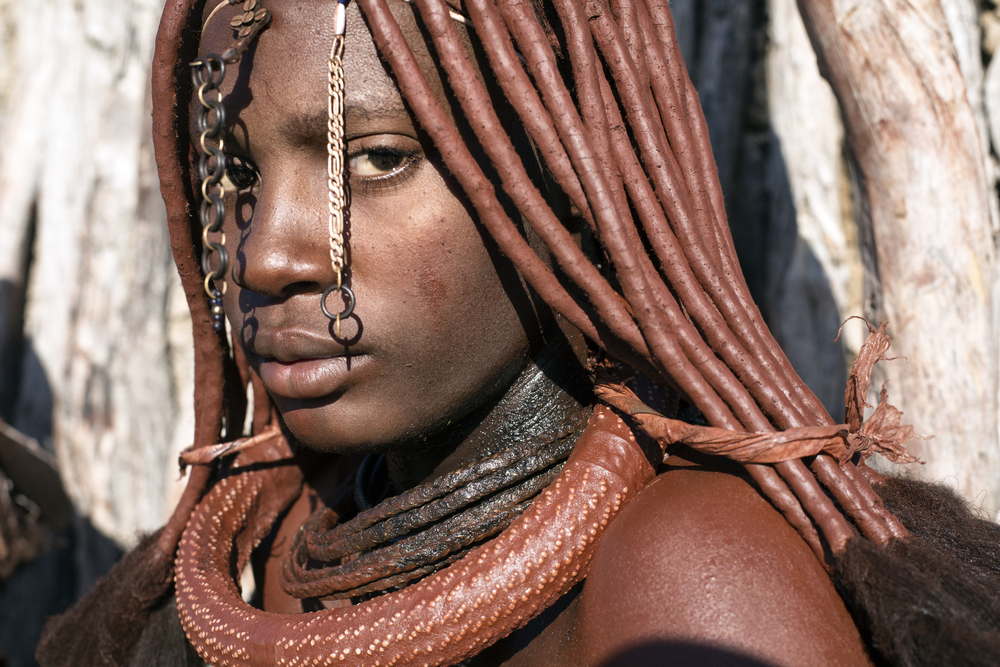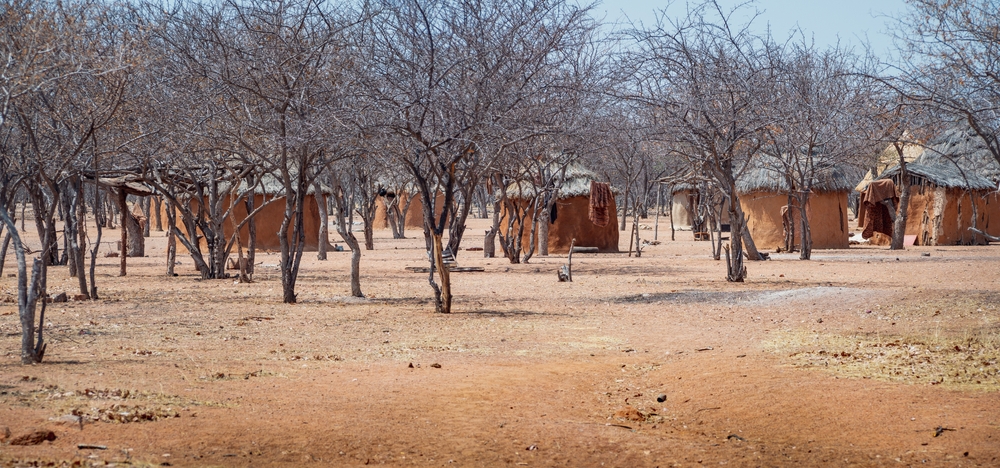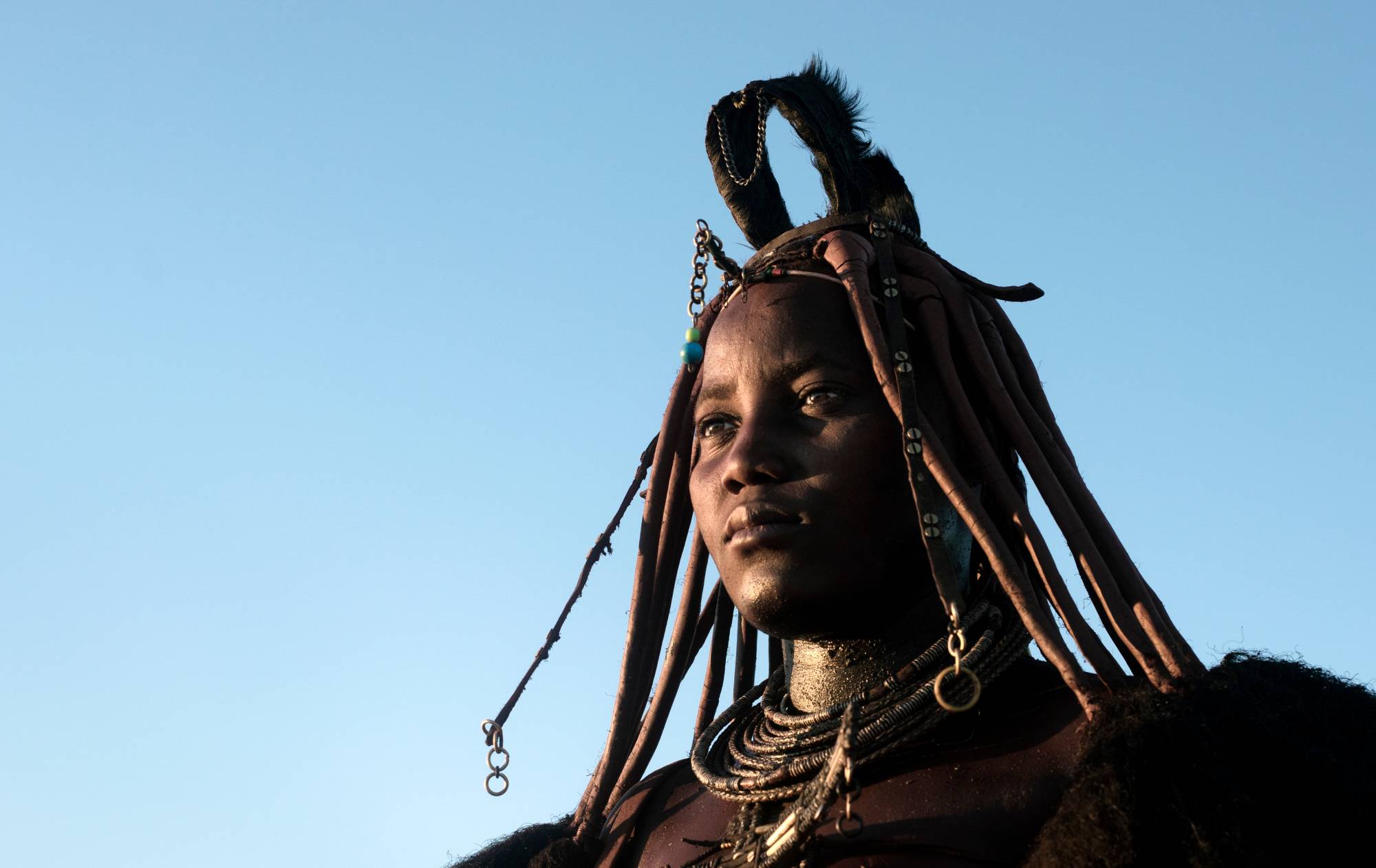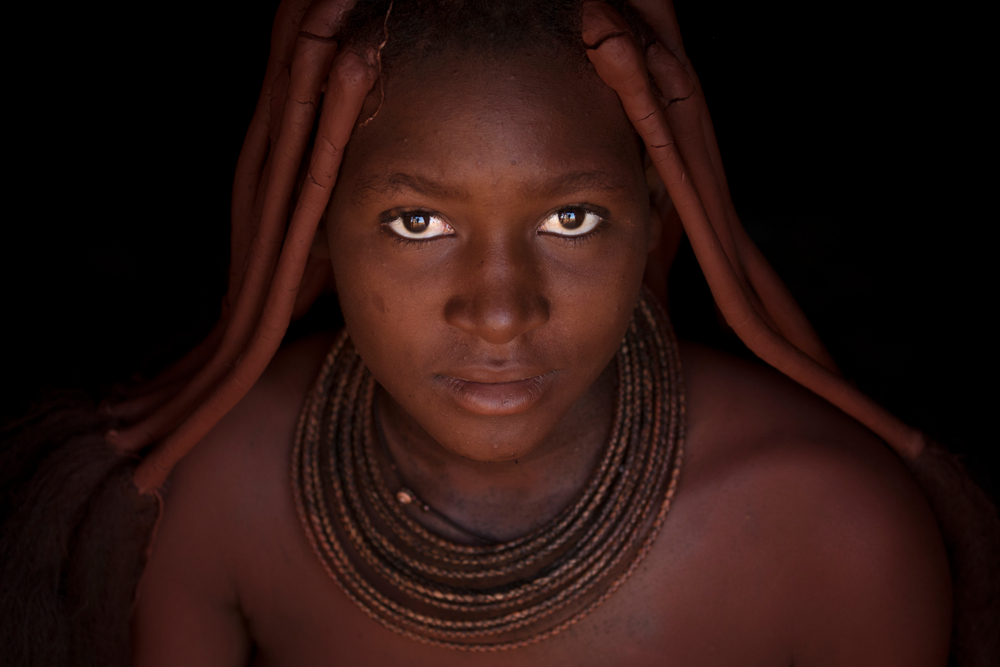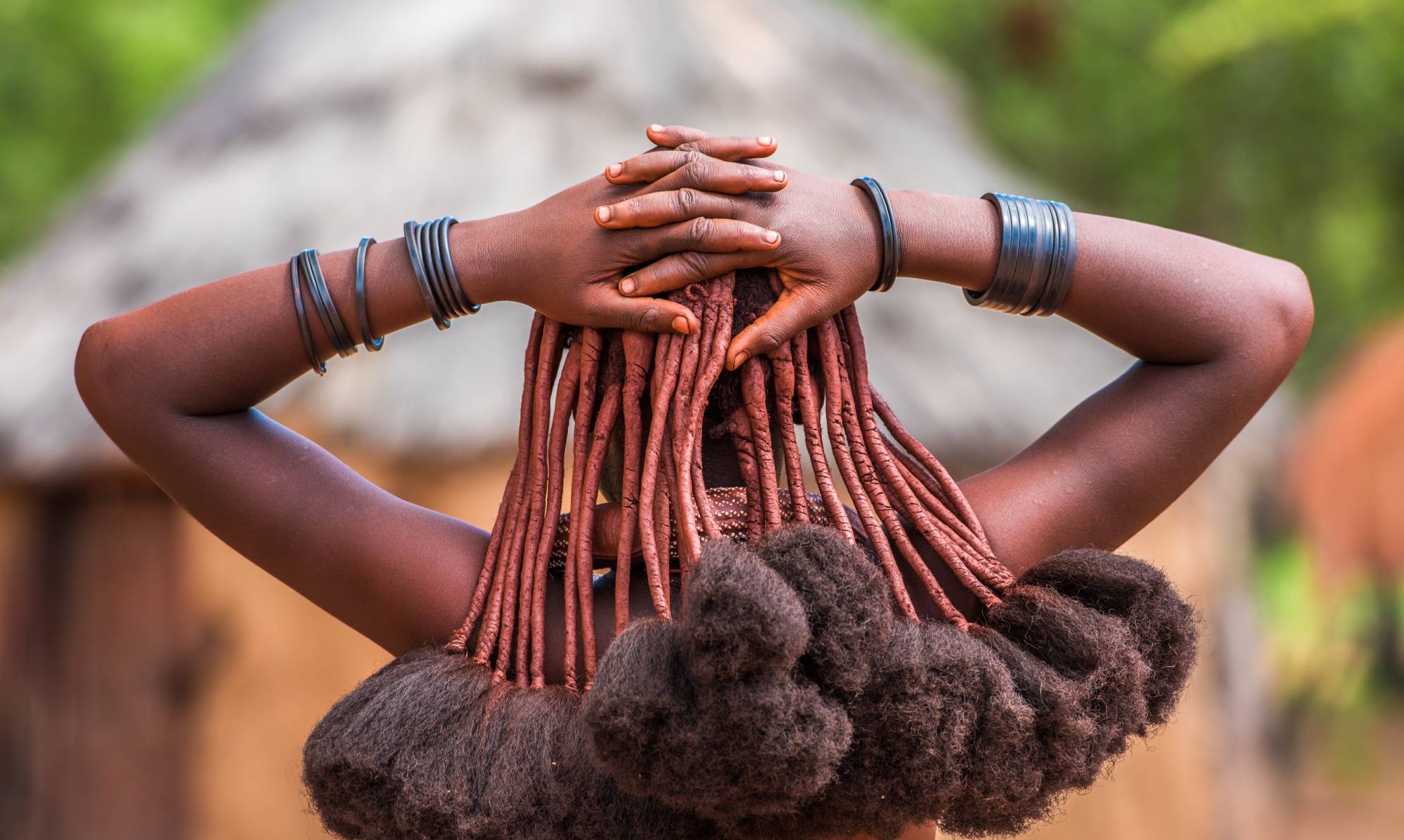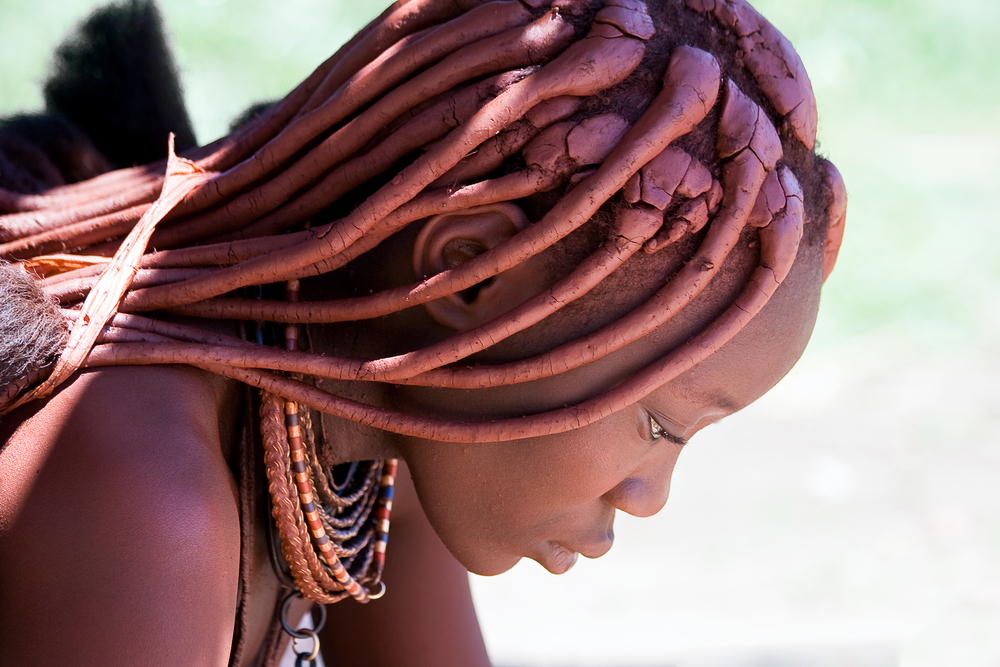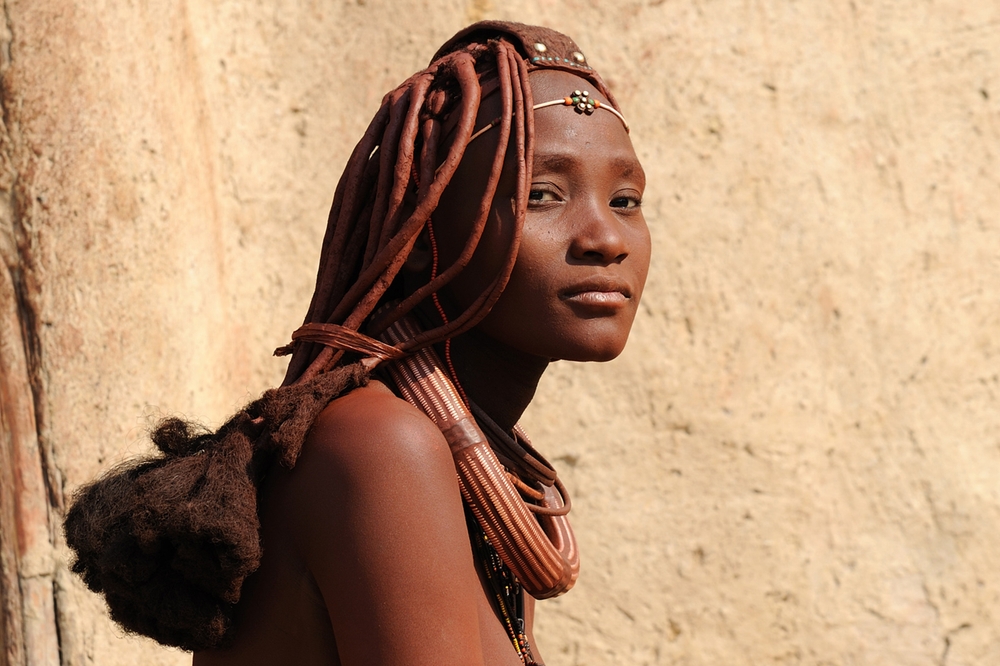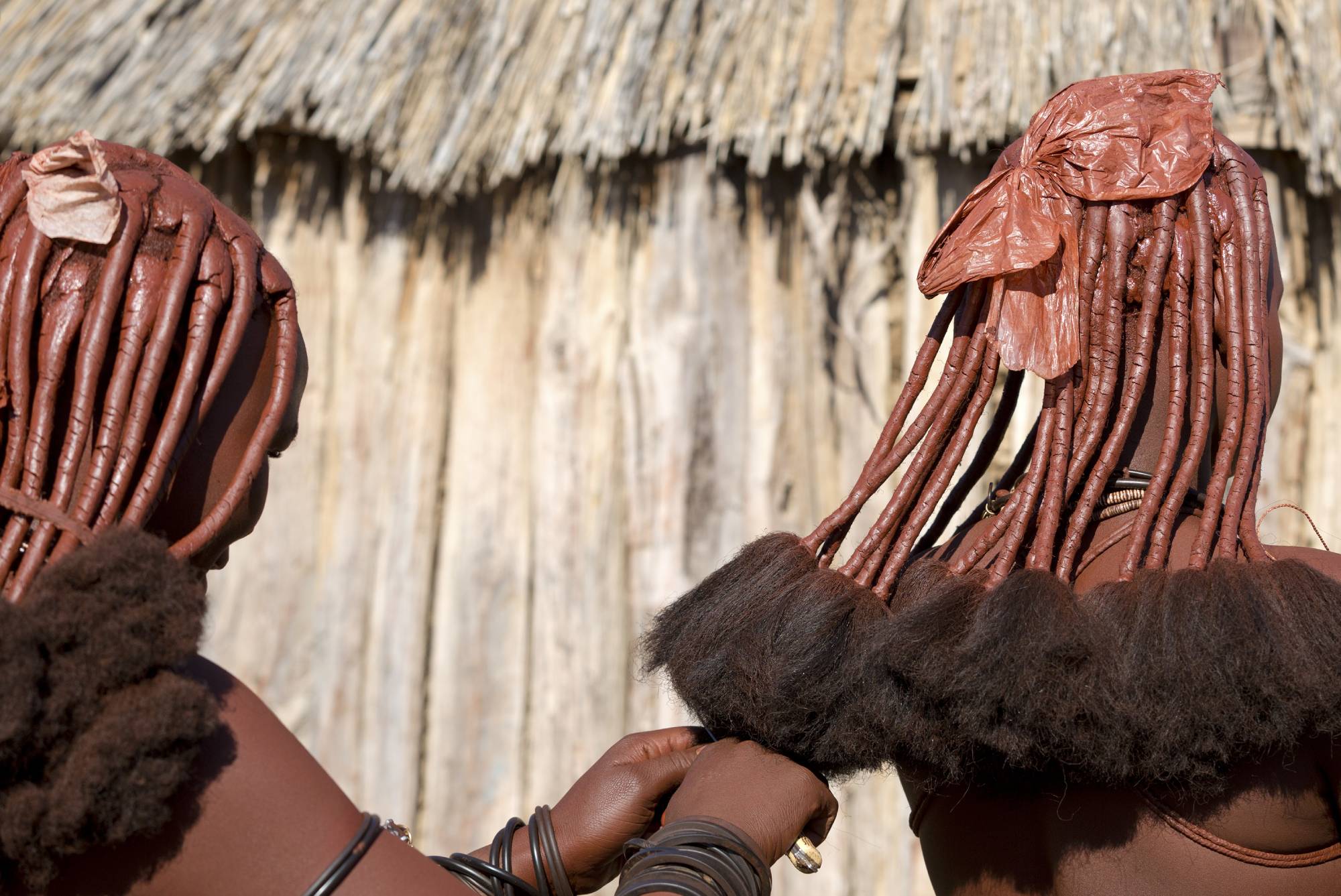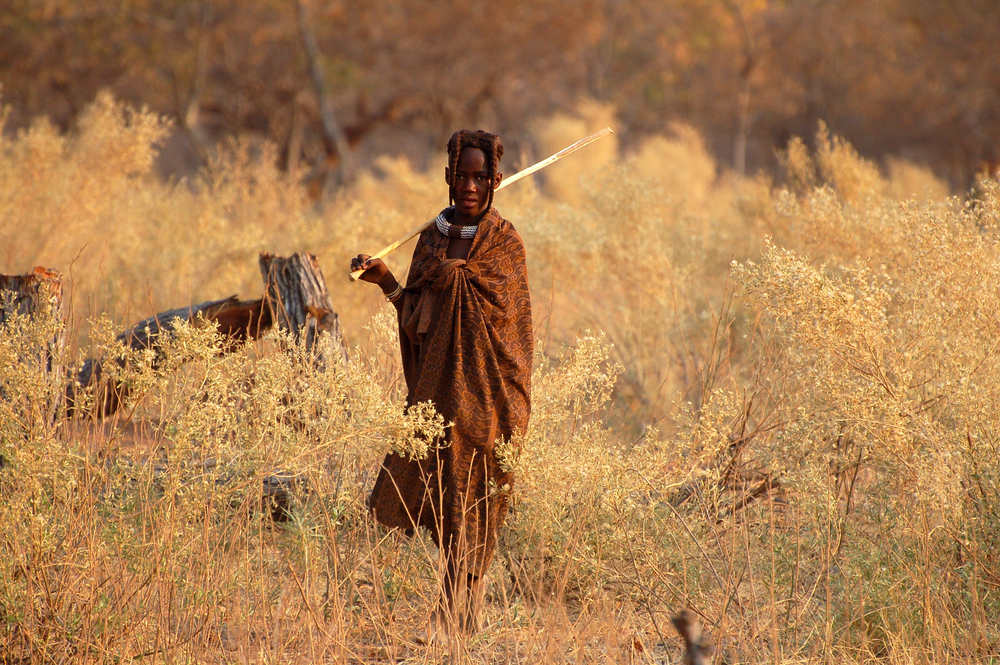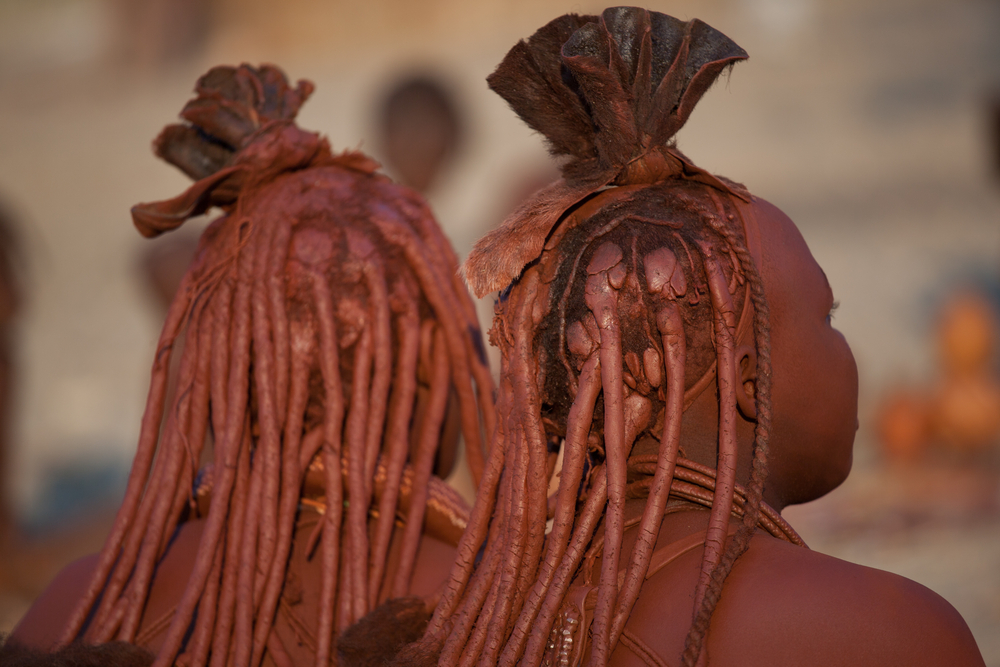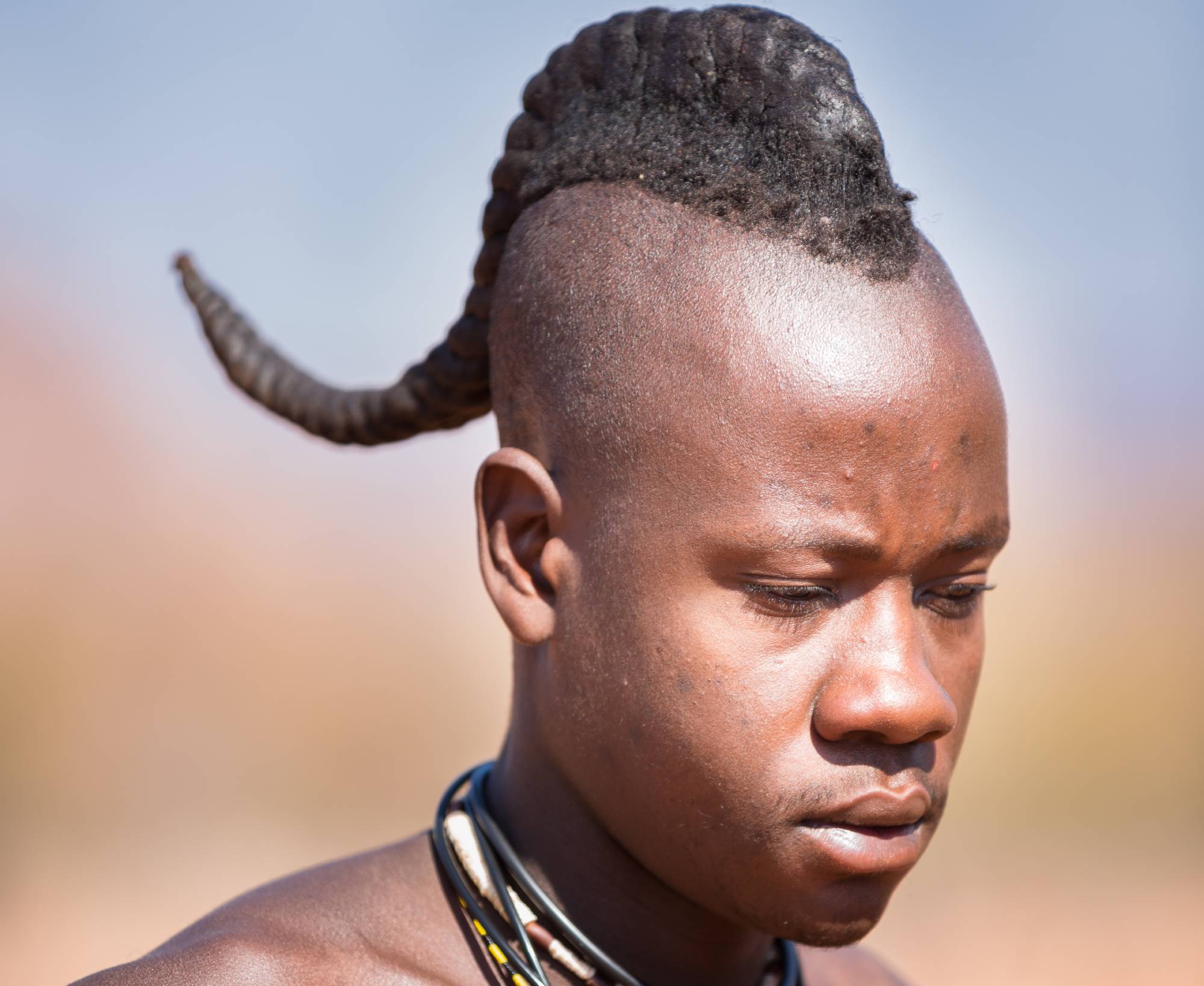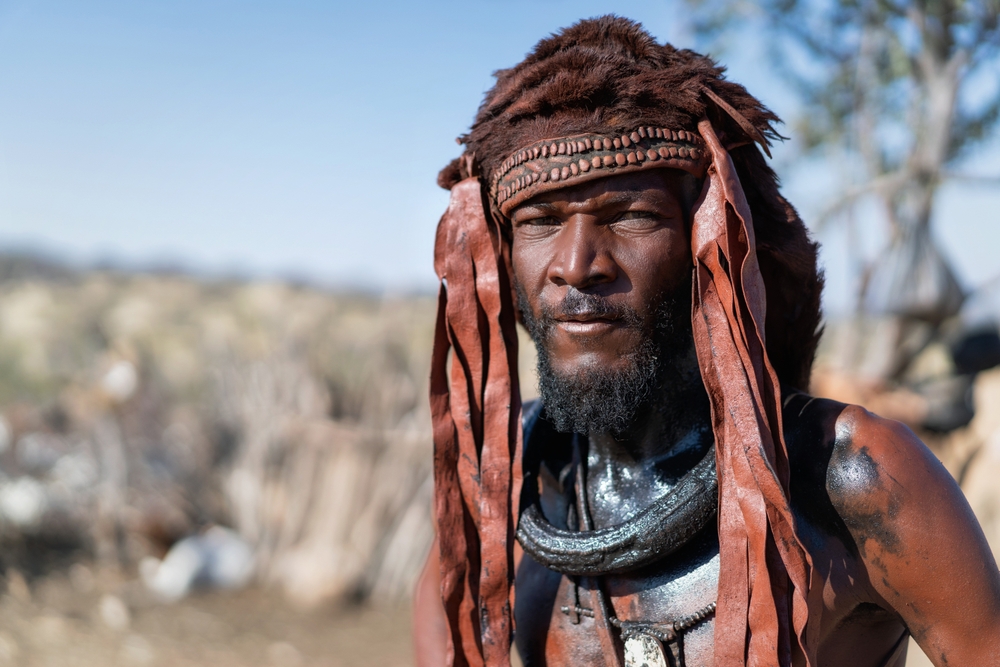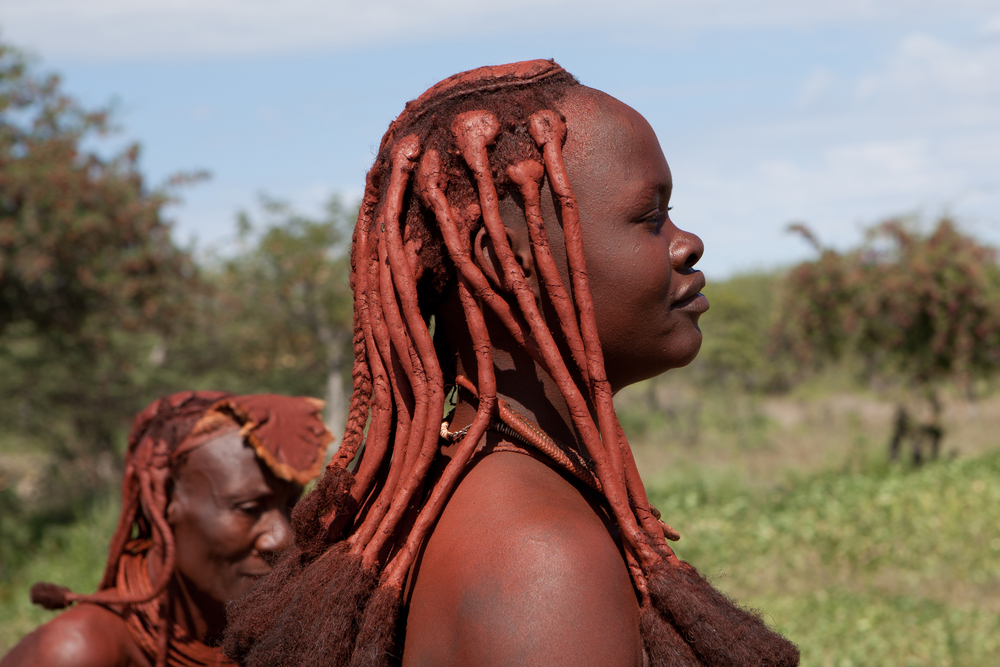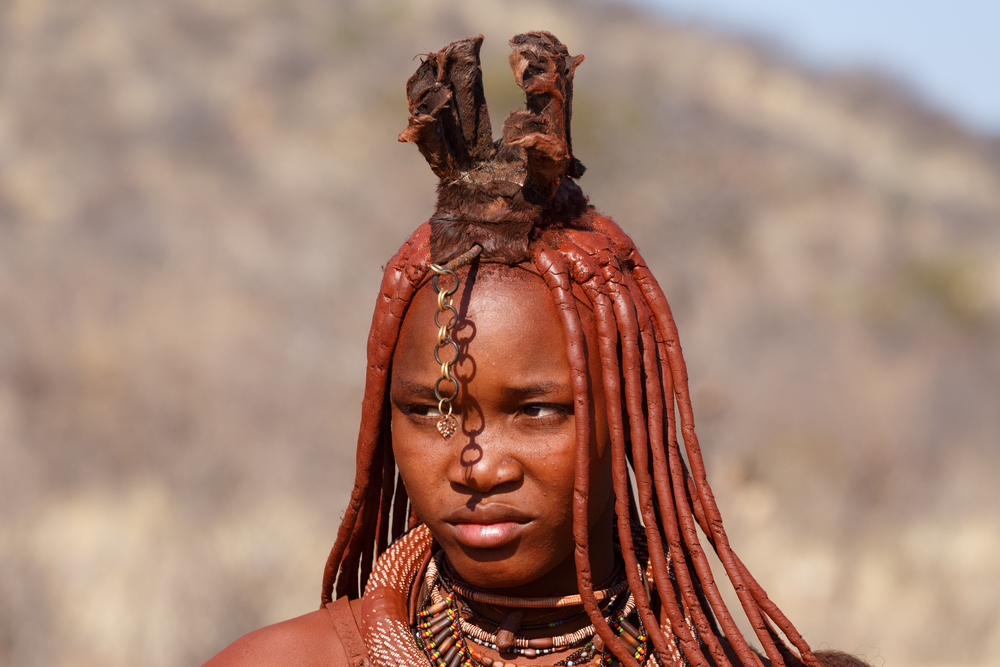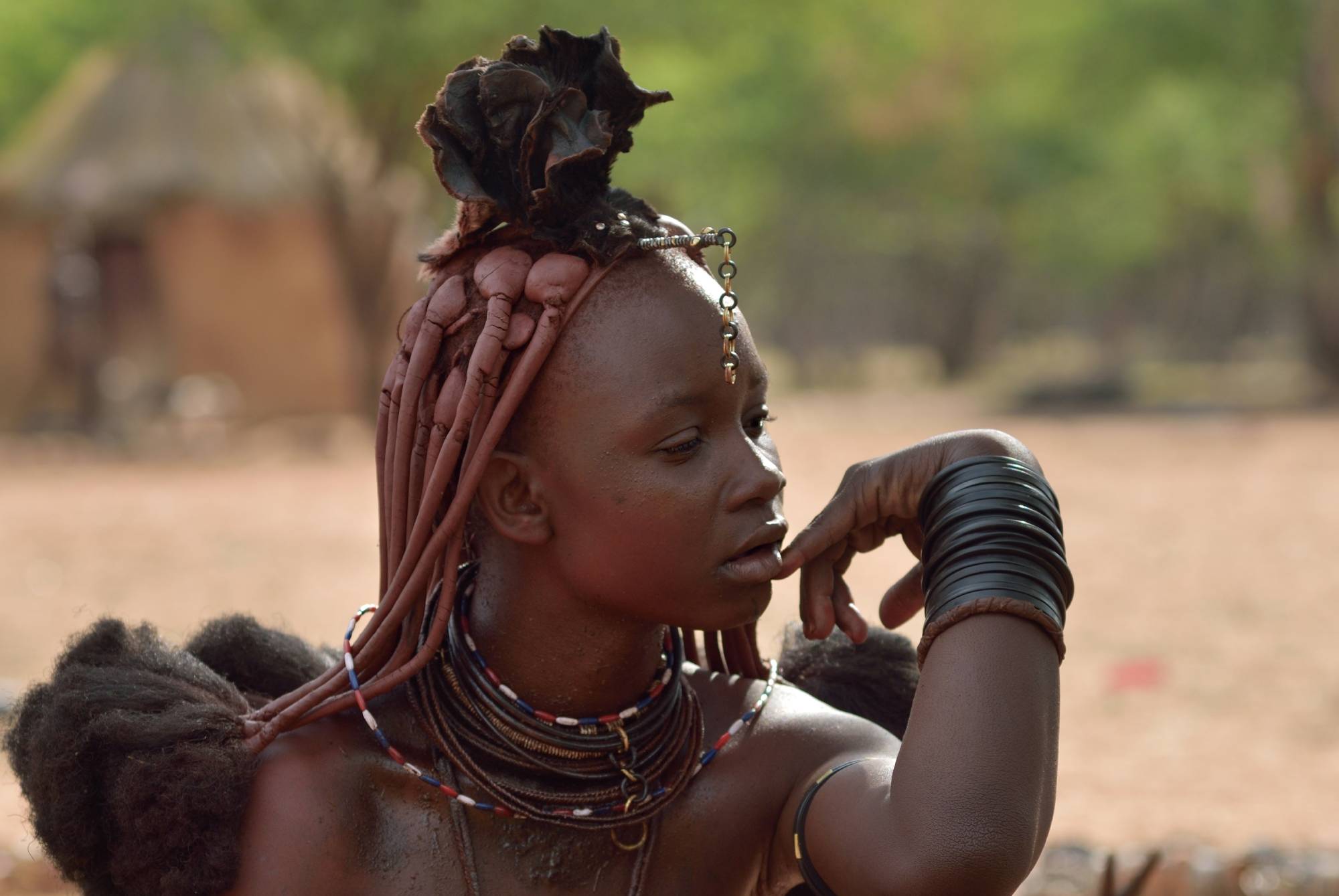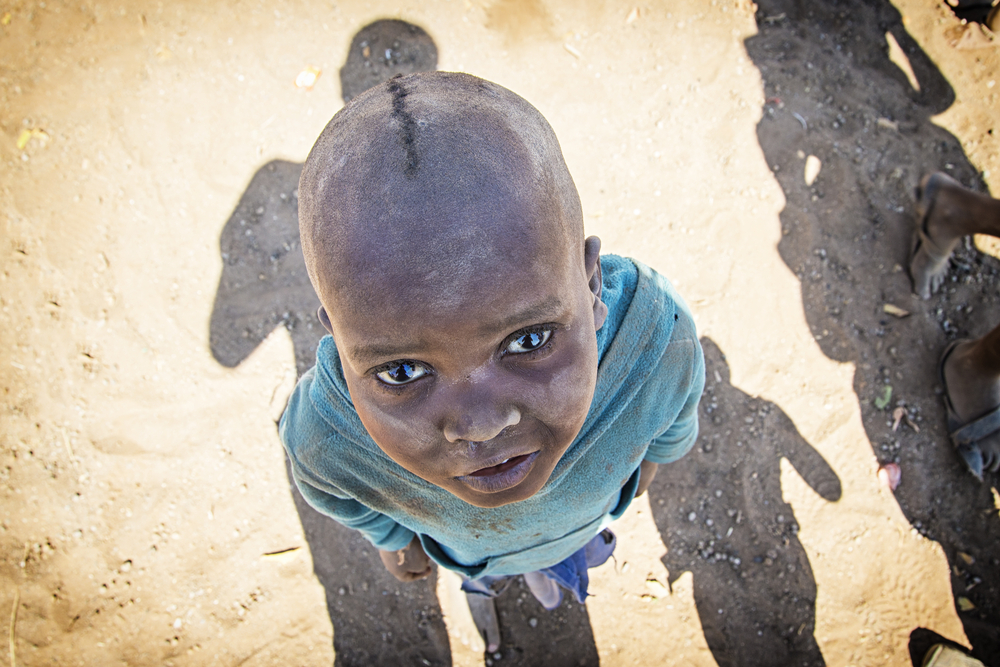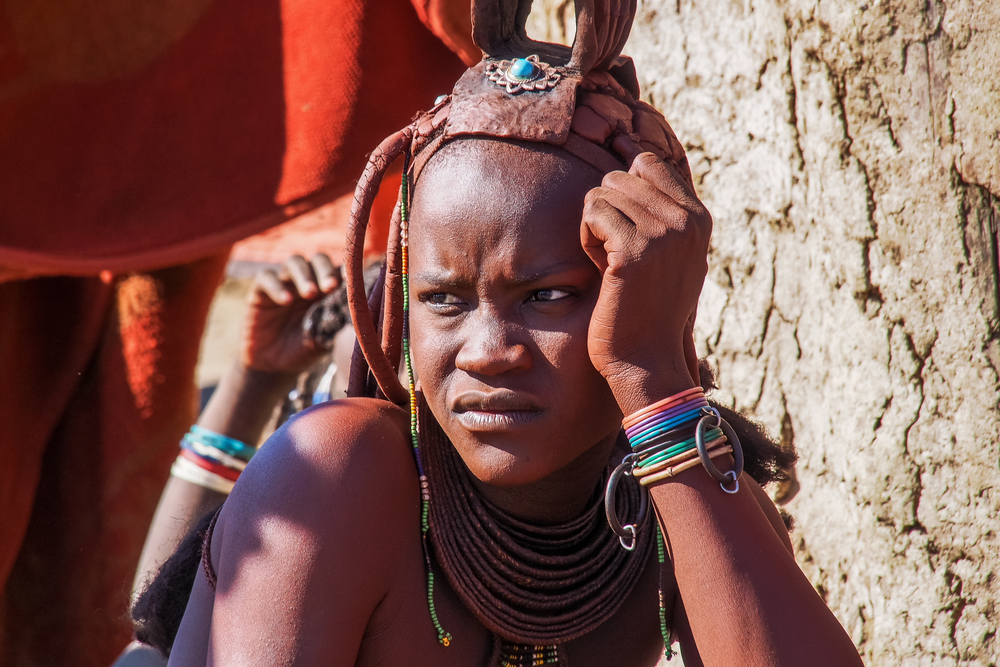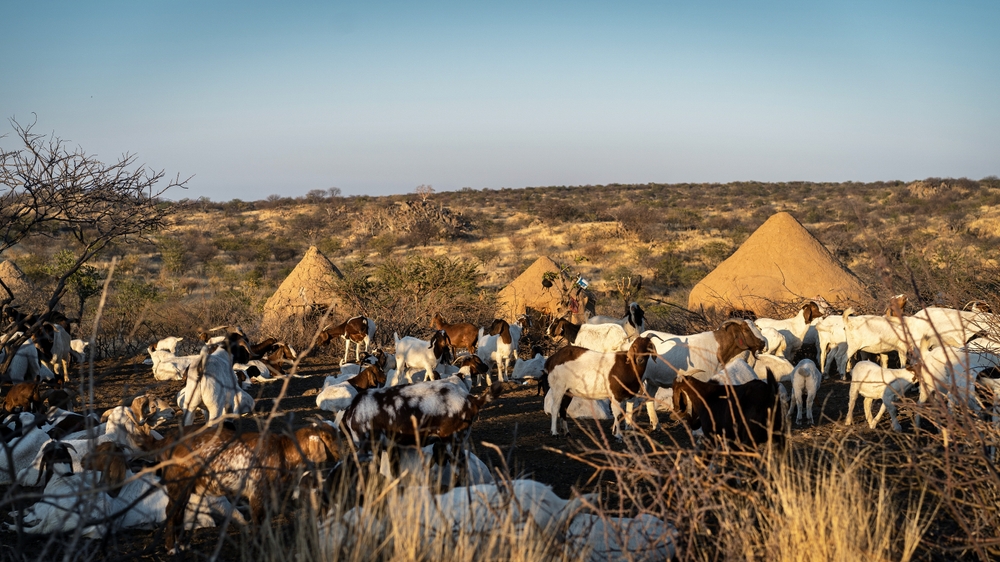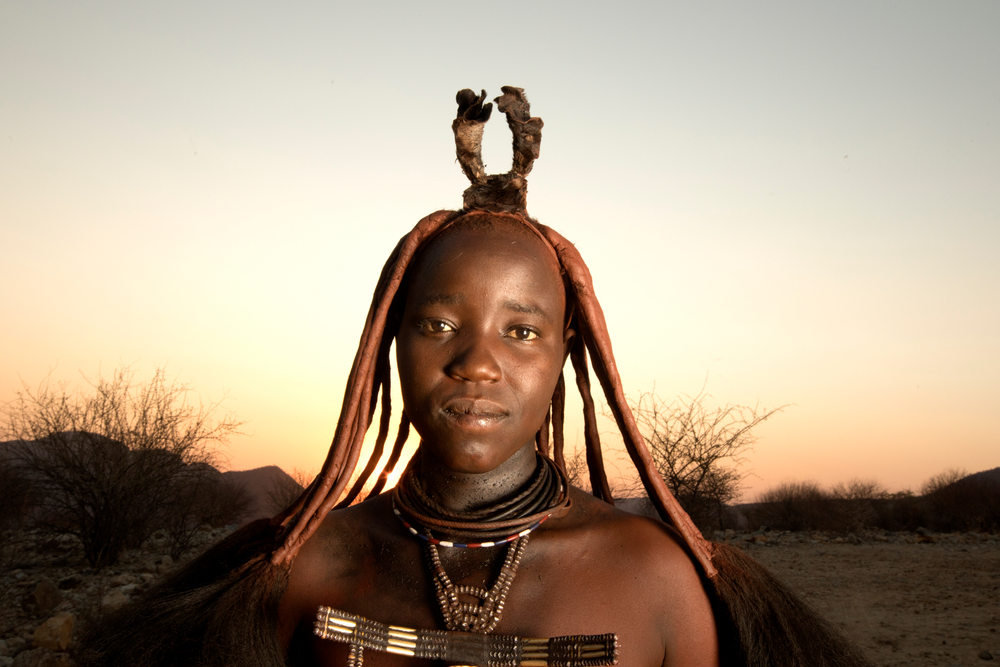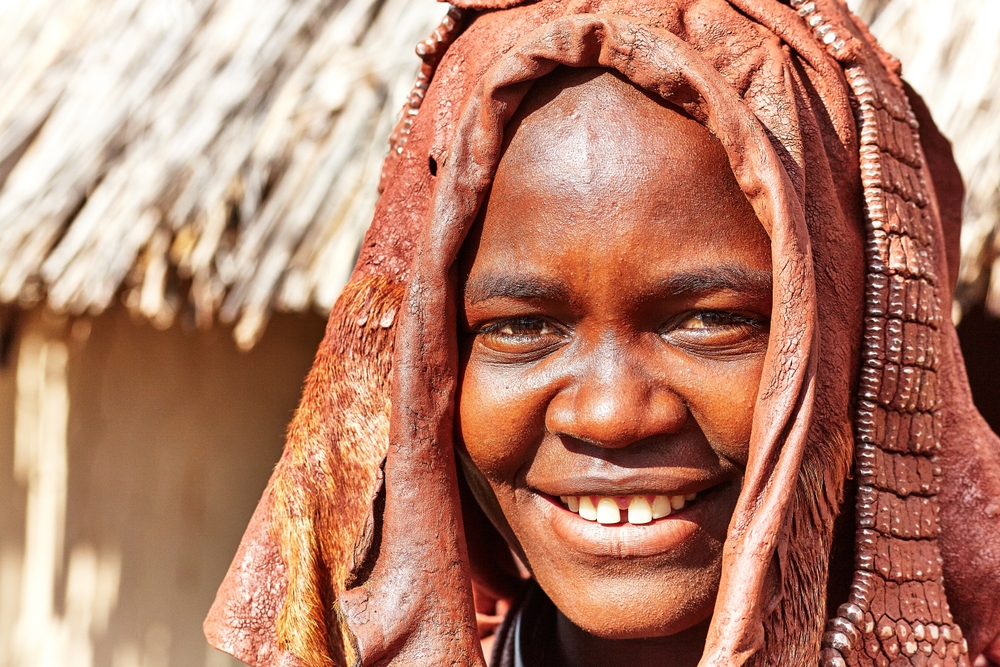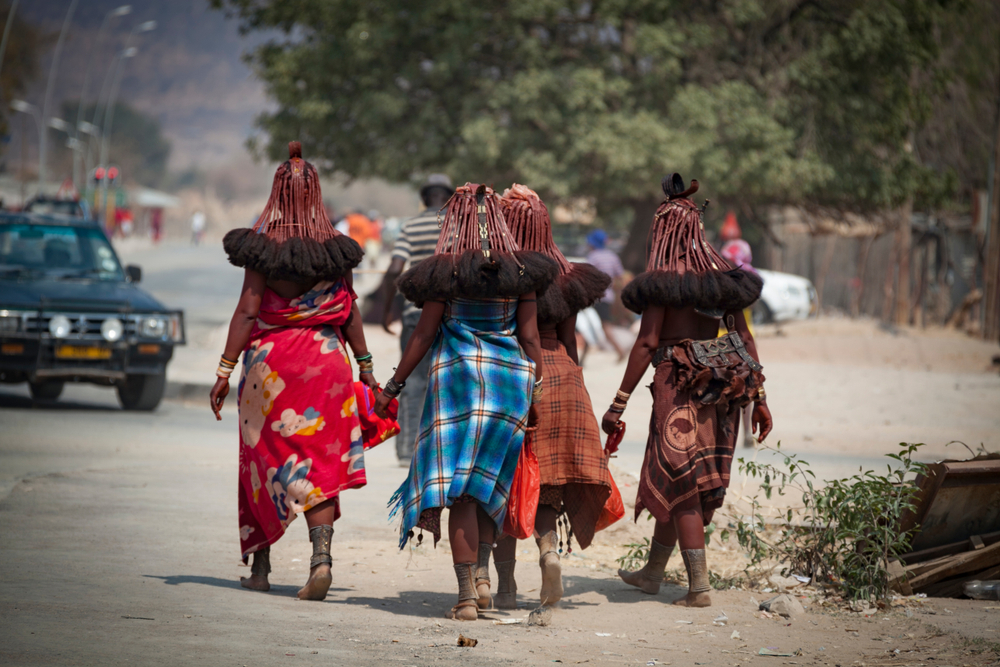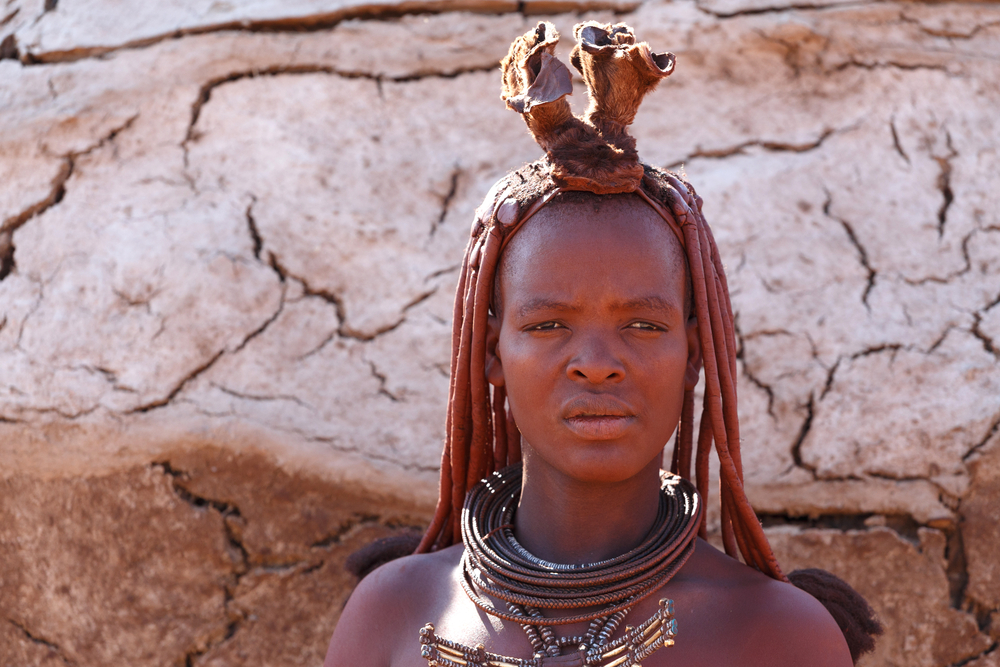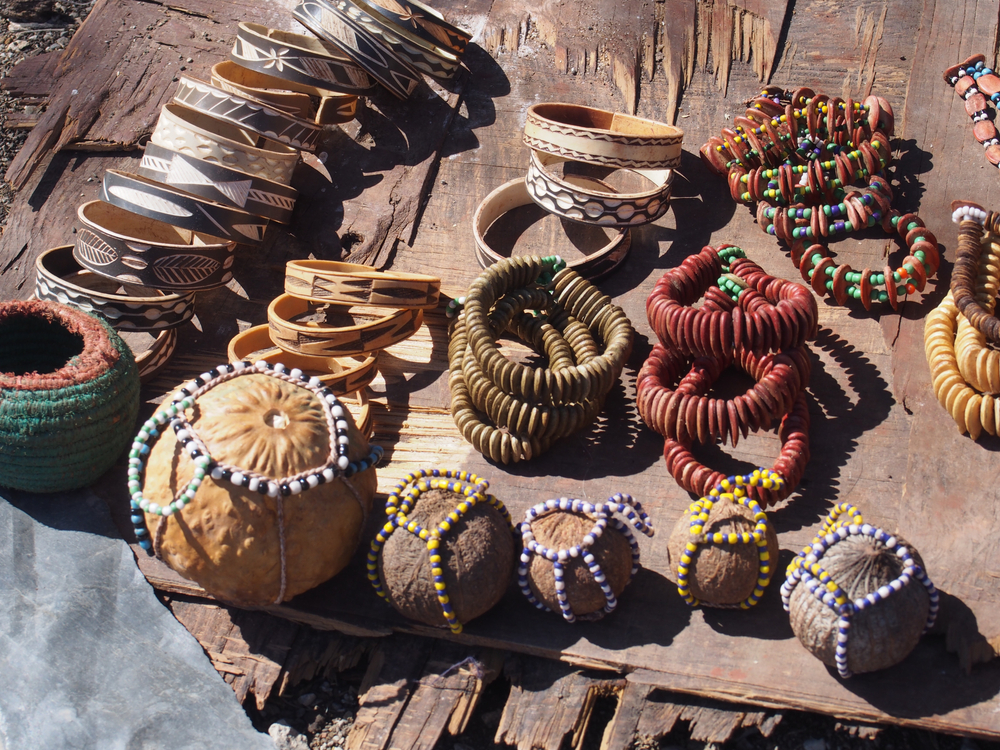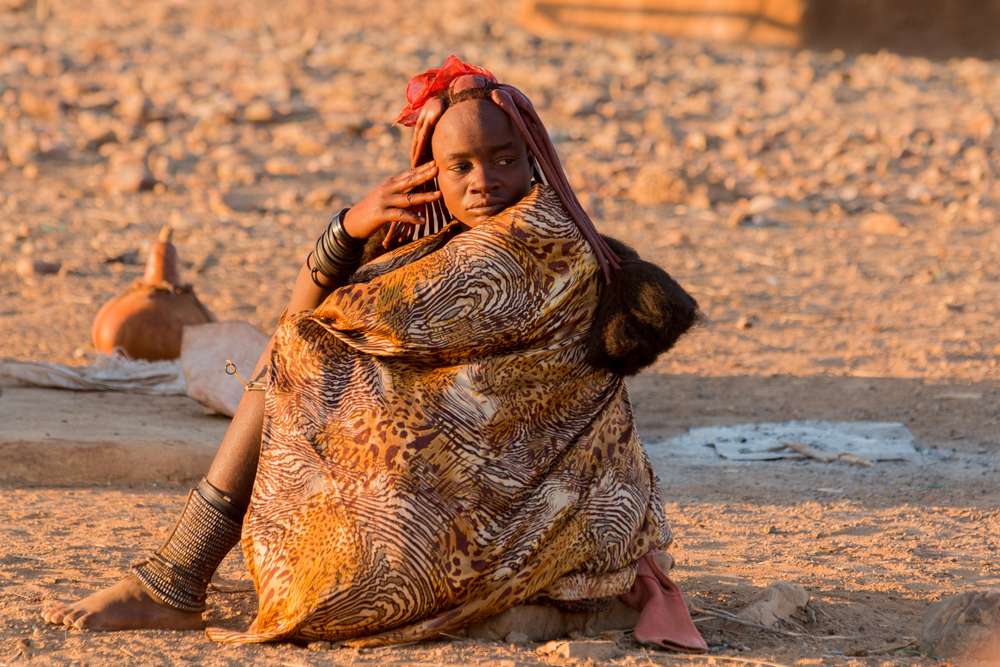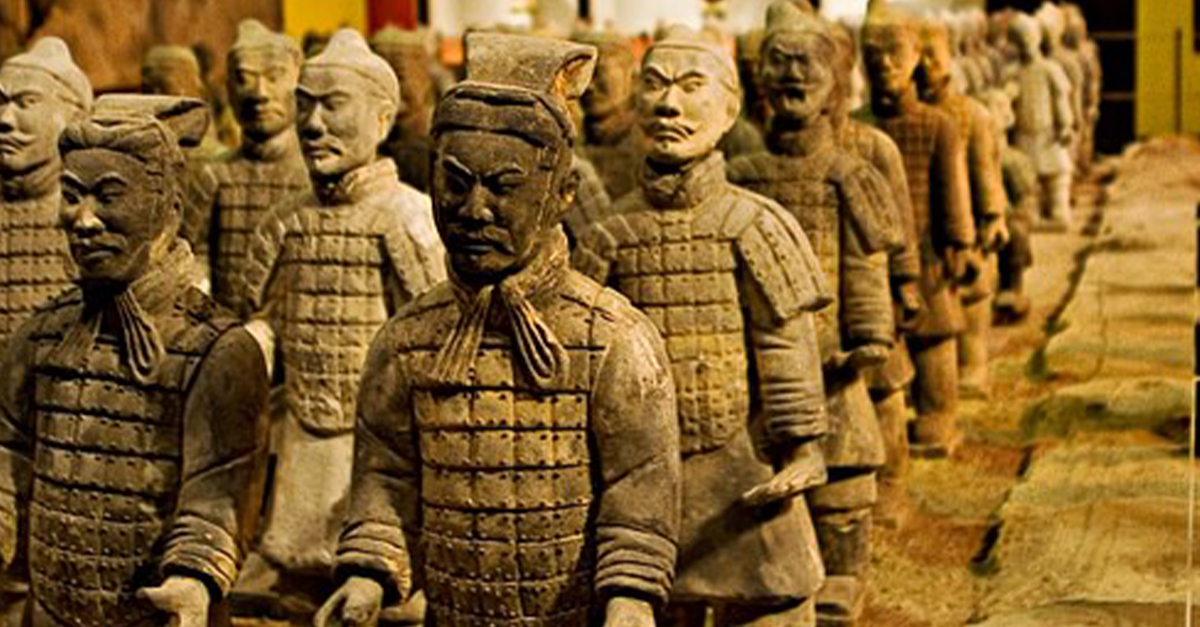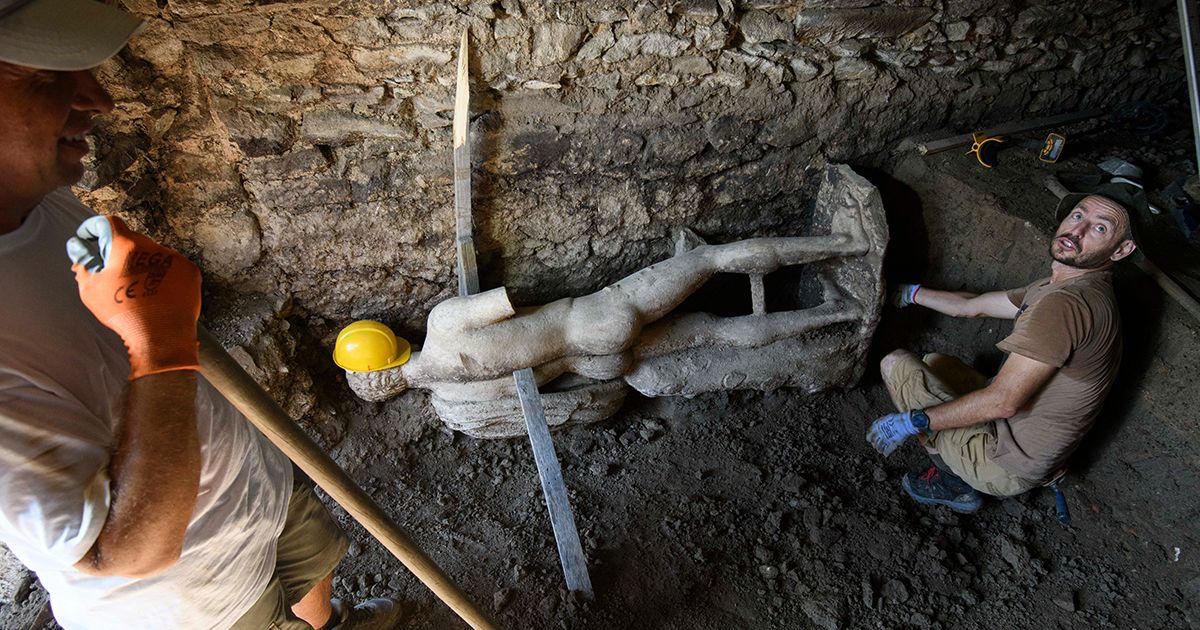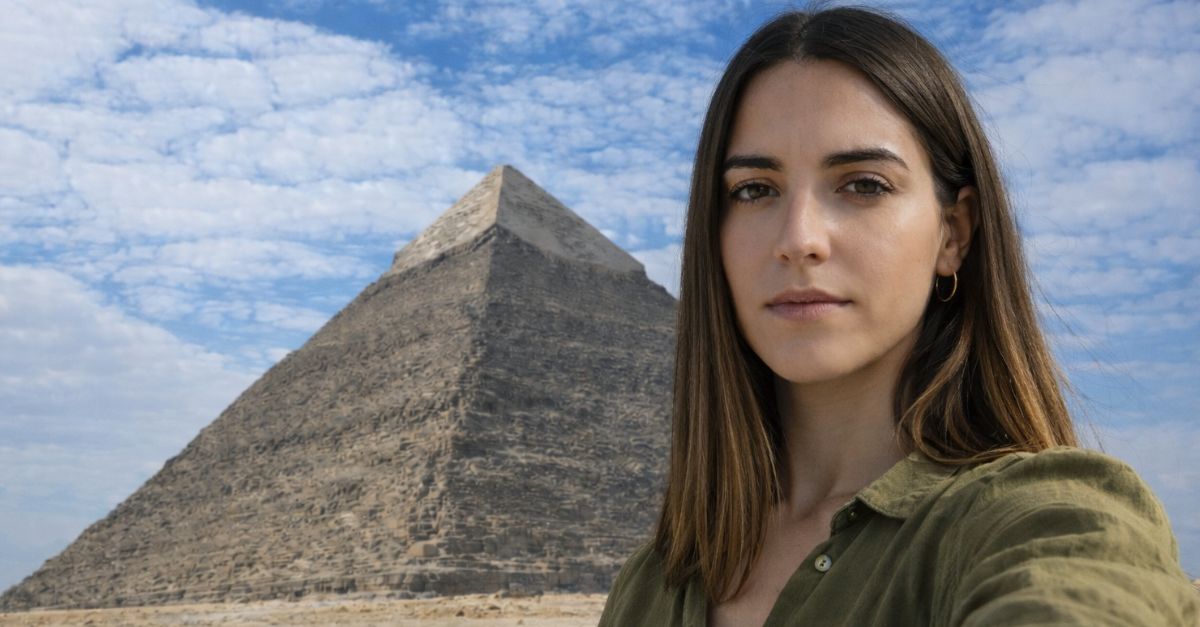Who Are The Himba?
The Himba tribe are one of the few tribes in the world who strongly maintain their traditional ways, cultures, and beliefs. They are fascinating, and one of their practices has them known as the "Red People" of Africa—so let's take a look.
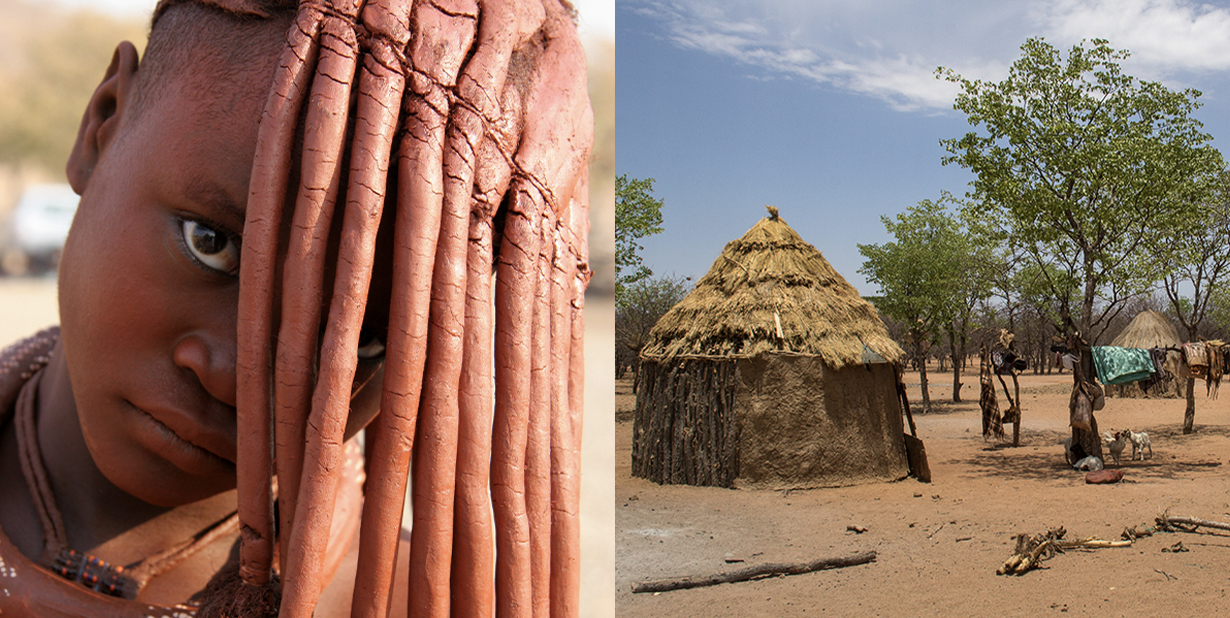
The Himba People
The Himba People call are an indigenous population with only about 50,000 people. They call themselves OvaHimba in the plural and OmuHimba in the singular.
Where They Live
The OvaHimba live in northern Namibia, a country in southern Africa. They live in the Kunene Region, nearby to Angola.
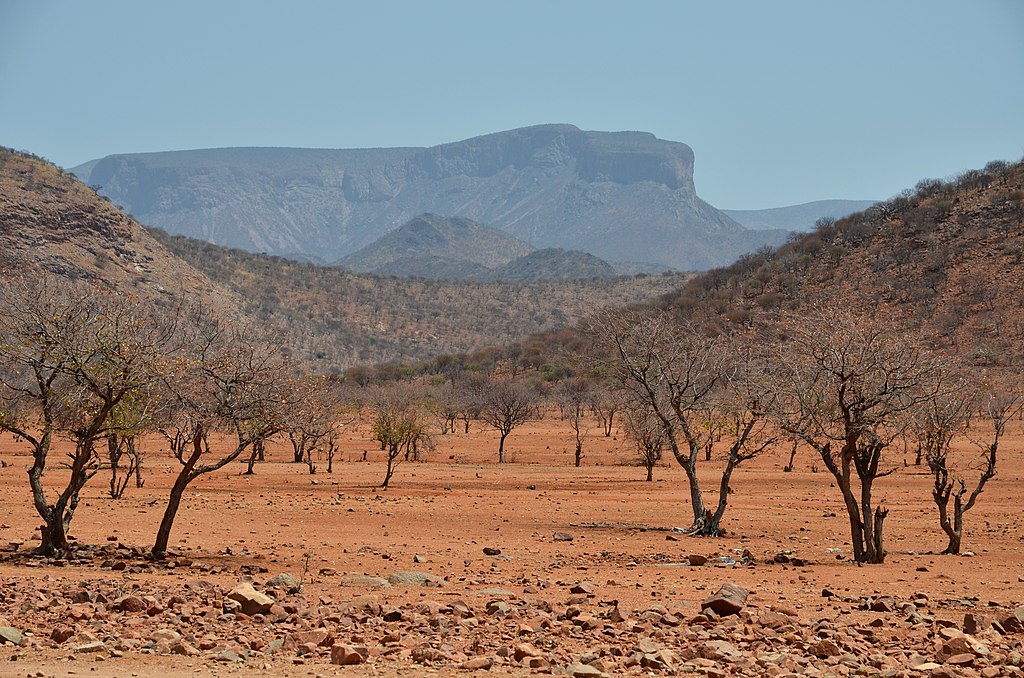 Pavel Špindler, CC BY 3.0, Wikimedia Commons
Pavel Špindler, CC BY 3.0, Wikimedia Commons
How They Live
The OvaHimba are semi-nomadic. Although they move around according to rainfall and other weather patterns, they have homesteads where they cultivate their crops.
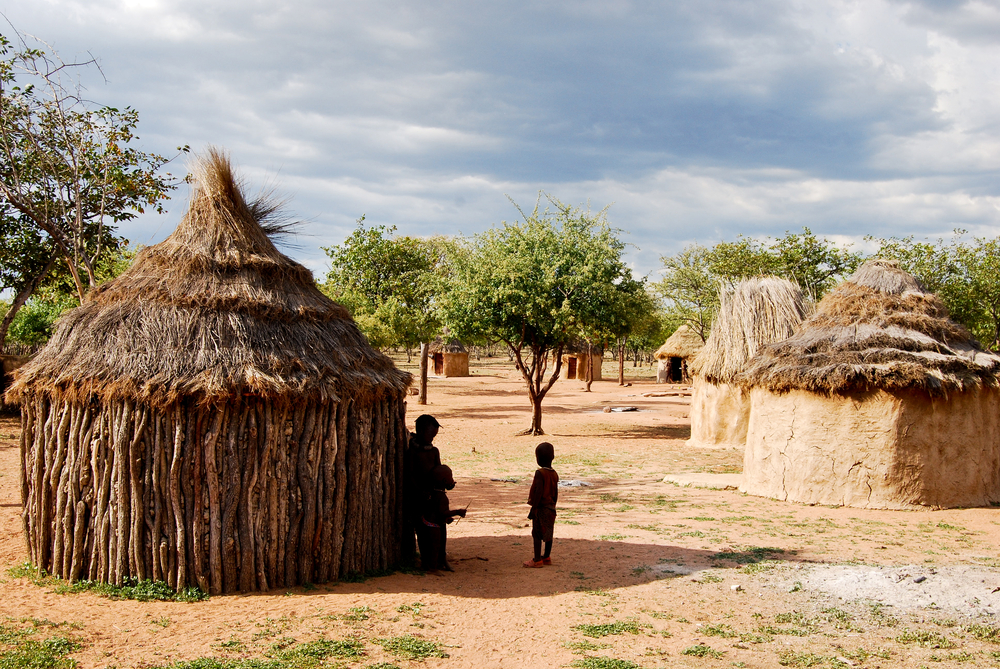 PIXEL to the PEOPLE, Shutterstock
PIXEL to the PEOPLE, Shutterstock
How They Survive
The majority of OvaHimba work in livestock farming, in particular breeding sheep and goats. They also grow crops like maize and millet.
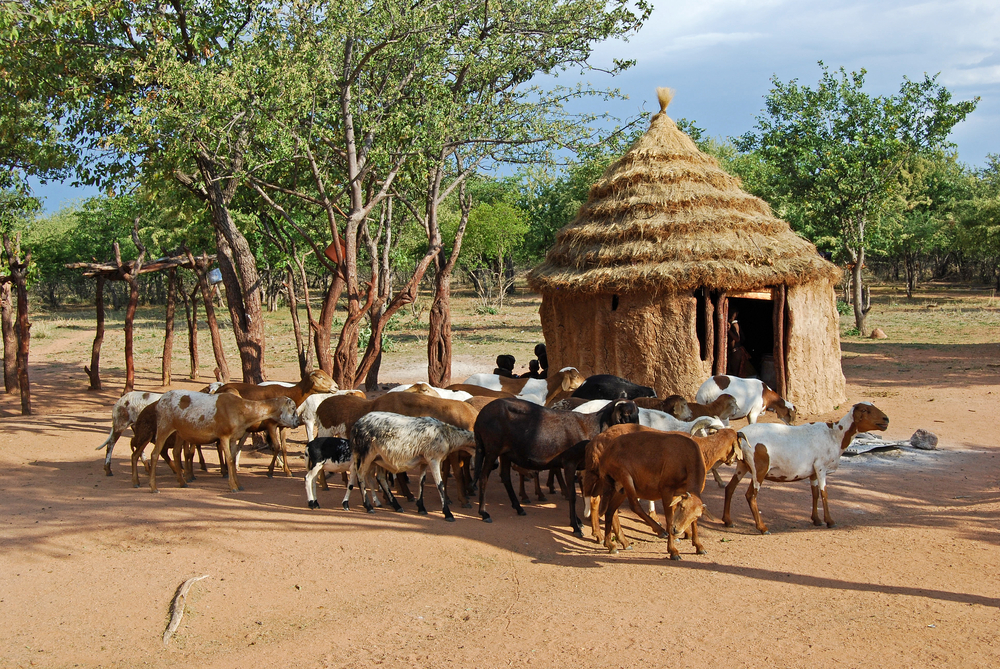 PIXEL to the PEOPLE, Shutterstock
PIXEL to the PEOPLE, Shutterstock
Living Without Money
As a peoples mostly isolated from the modern world, the OvaHimba frequently do not use our notions of currency. Instead, they count their wealth in the number of cattle they own.
Their Attitude Toward Money
Very few OvaHimba make any kind of salary, and they almost never sell any of their cattle for cash. They tend not to have any kind of wages at all, whether pensions or otherwise.
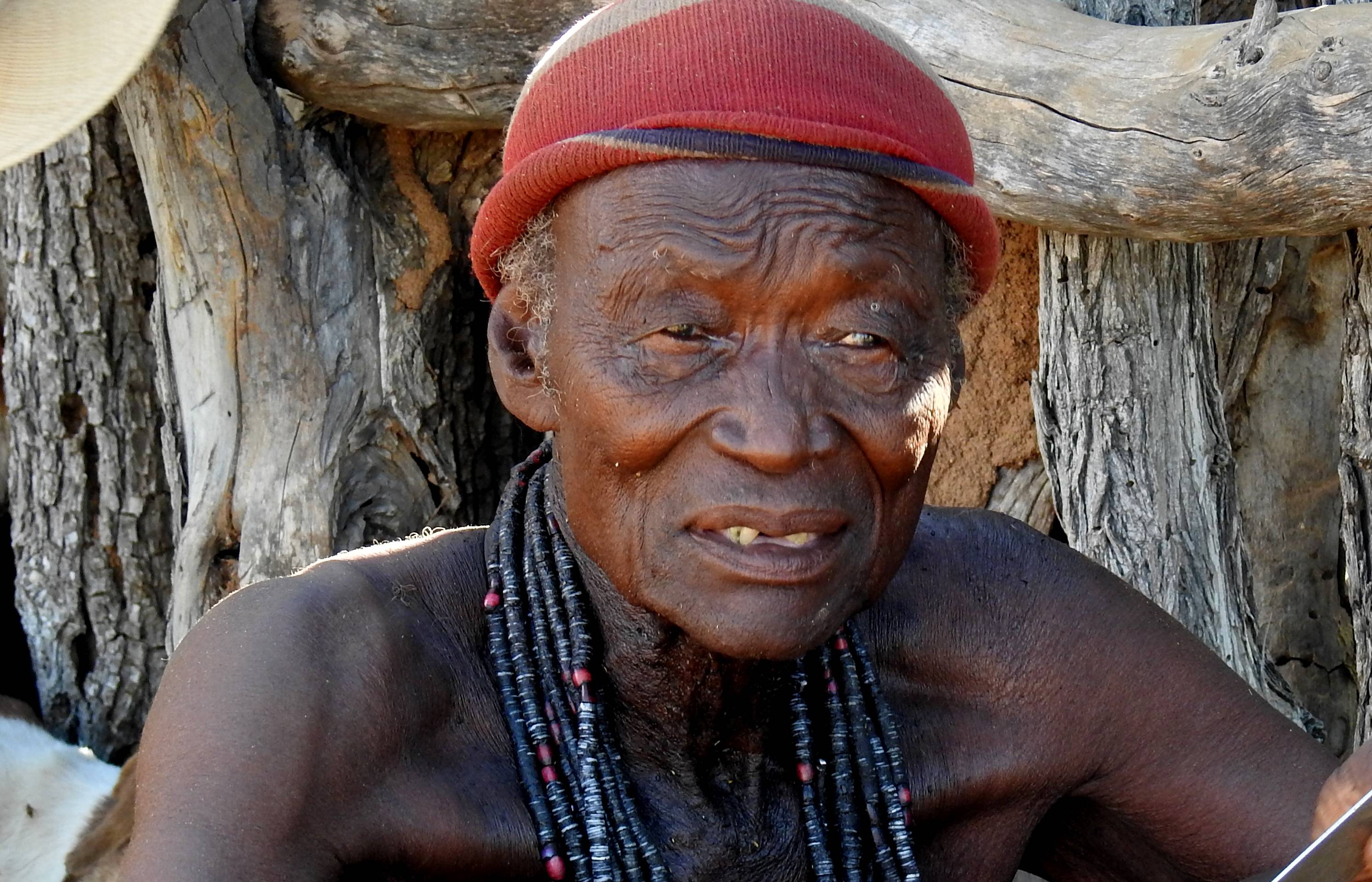 Aleksandra Wilert, Shutterstock
Aleksandra Wilert, Shutterstock
How They Make Money
If the OvaHimba come by any kind of money, it is usually through work on conservation of the nature around them, including drought relief, and it's given to them by Namibia's government.
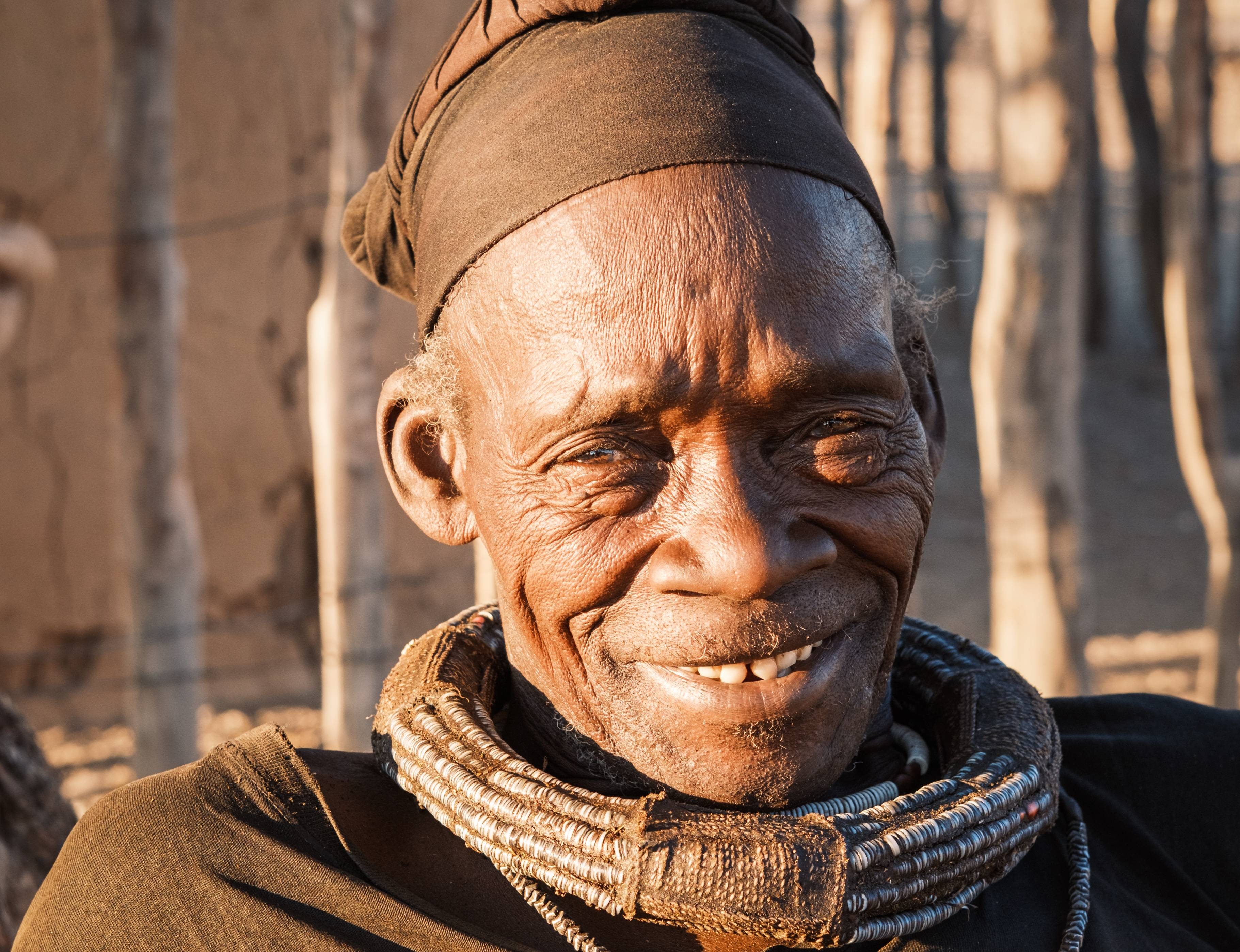 Maurizio De Mattei, Shutterstock
Maurizio De Mattei, Shutterstock
What They Eat
The OvaHimba eat mostly sour milk and maize porridge. If meat and milk are scarce, they will sometimes eat hard, plain porridge. In addition, they sometimes have cornmeal, chicken eggs, herbs, and honey on hand.
Division Of Labor
Women and girls, rather than men and boys, usually perform most of the hard labor in the community. Women will carry water, repair homes, and collect firewood.
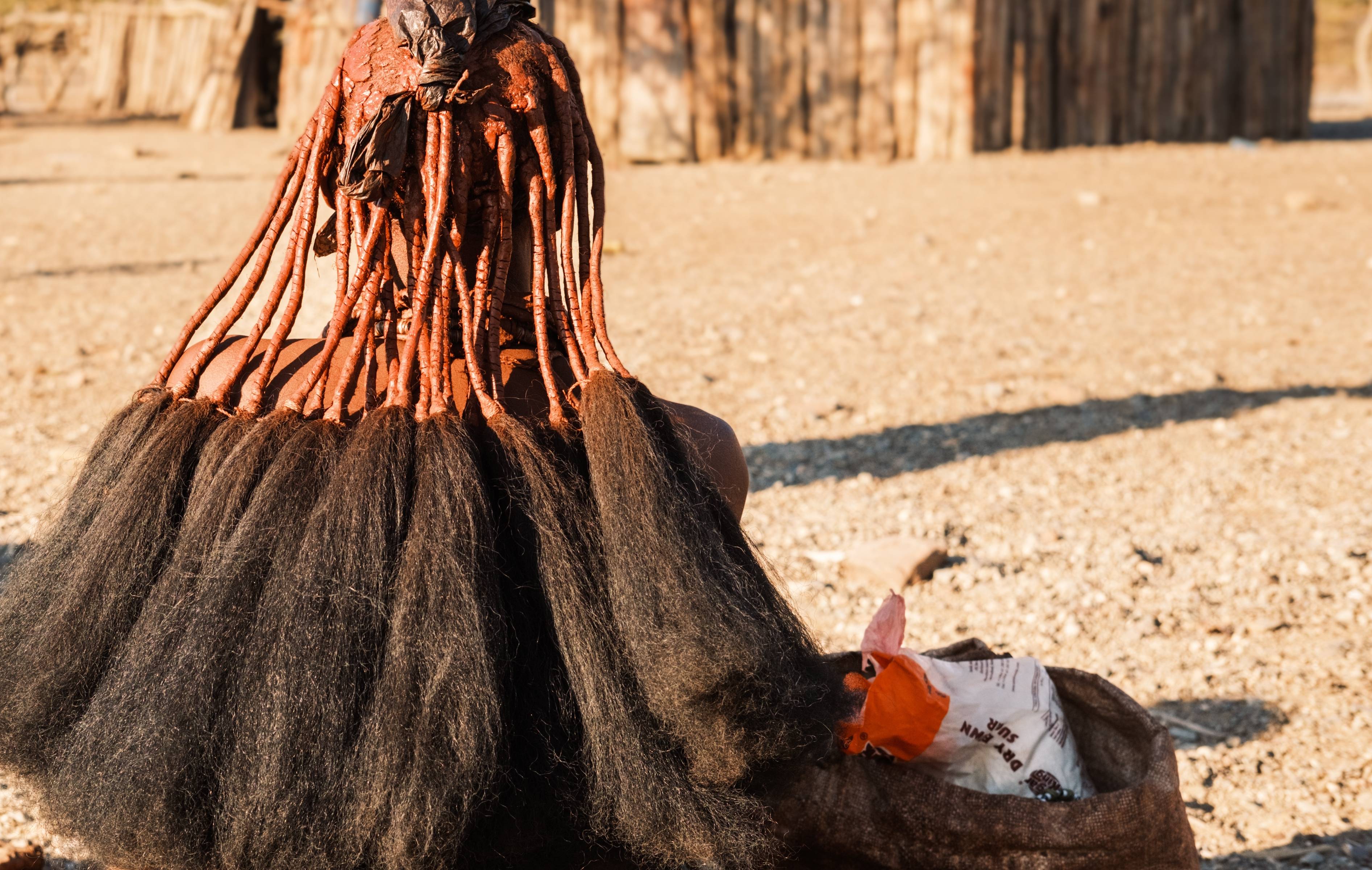 Maurizio De Mattei, Shutterstock
Maurizio De Mattei, Shutterstock
Traditional Feminine Duties
In addition to this manual labor, women will also usually cook meals, child-rear, and clean living areas. They also perform artisanal work like making jewelry.
What The Men Are Responsible For
Although women and girls tend to the cattle's immediate care needs, the men and boys have primary control over the livestock. They do the job of herding the cattle, which usually means being away from the homestead for long periods.
The men also do initial building construction, and hold council with the village's chiefs.
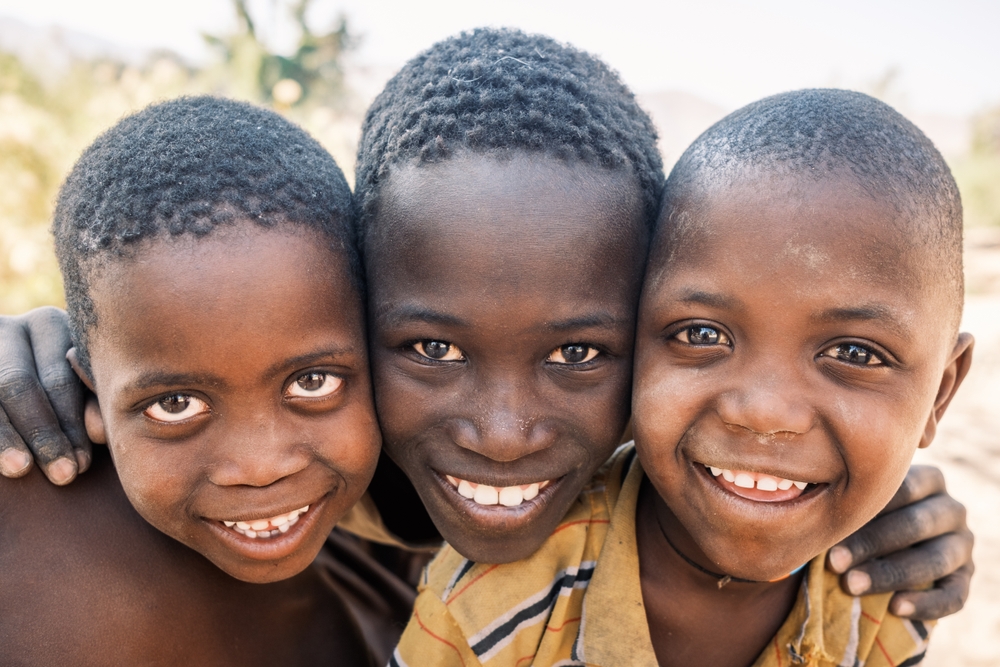 Maurizio De Mattei, Shutterstock
Maurizio De Mattei, Shutterstock
Their Villages
The OvaHimba organize into small family-villages they call a homestead. Homesteads are a circle of huts that go around a sacred ancestral fire, or an okuruwo. Nearby, there is also a special animal pen for the livestock the OvaHimba consider sacred.
Their Sacred Fire And Animals
The sacred fire and sacred livestock at the center of the homesteads are important parts of Himba beliefs. The OvaHimba believe the sacred fire gives them ancestral protection, and that the sacred livestock let them have "proper relations between human and ancestor."
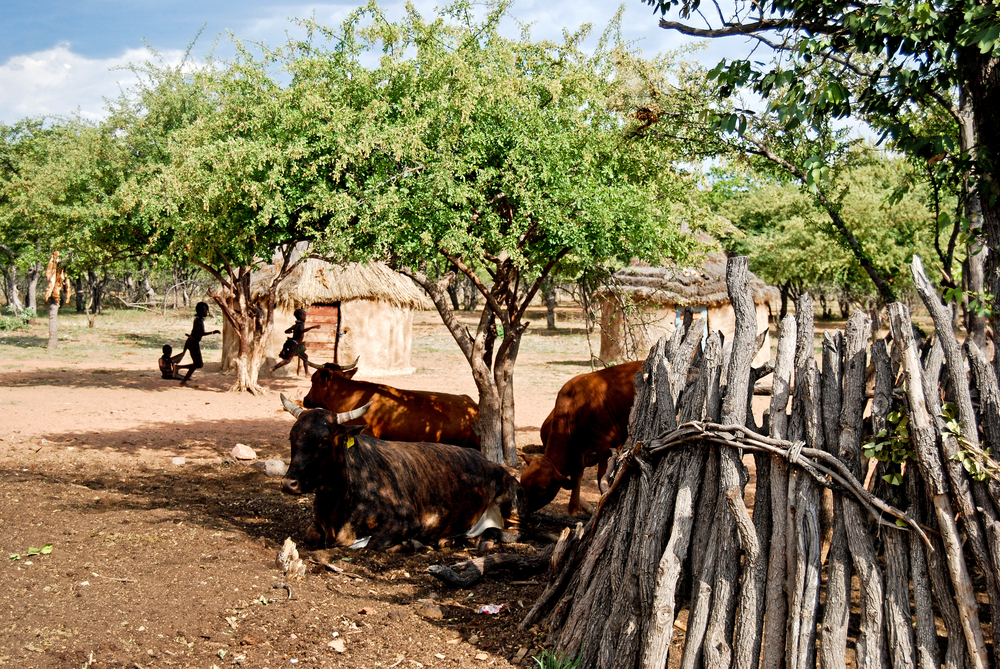 PIXEL to the PEOPLE, Shutterstock
PIXEL to the PEOPLE, Shutterstock
Religious Beliefs
The OvaHimba believe in one god, Mukuru. However, they also practice ancestor reverence. While Mukuru only blesses people, their ancestors can bless and curse.
Tending The Sacred Fire
The sacred fires need tending. This is done by the fire-keeper, who communicates with Mukuru and the ancestors on behalf of the family every week or so.
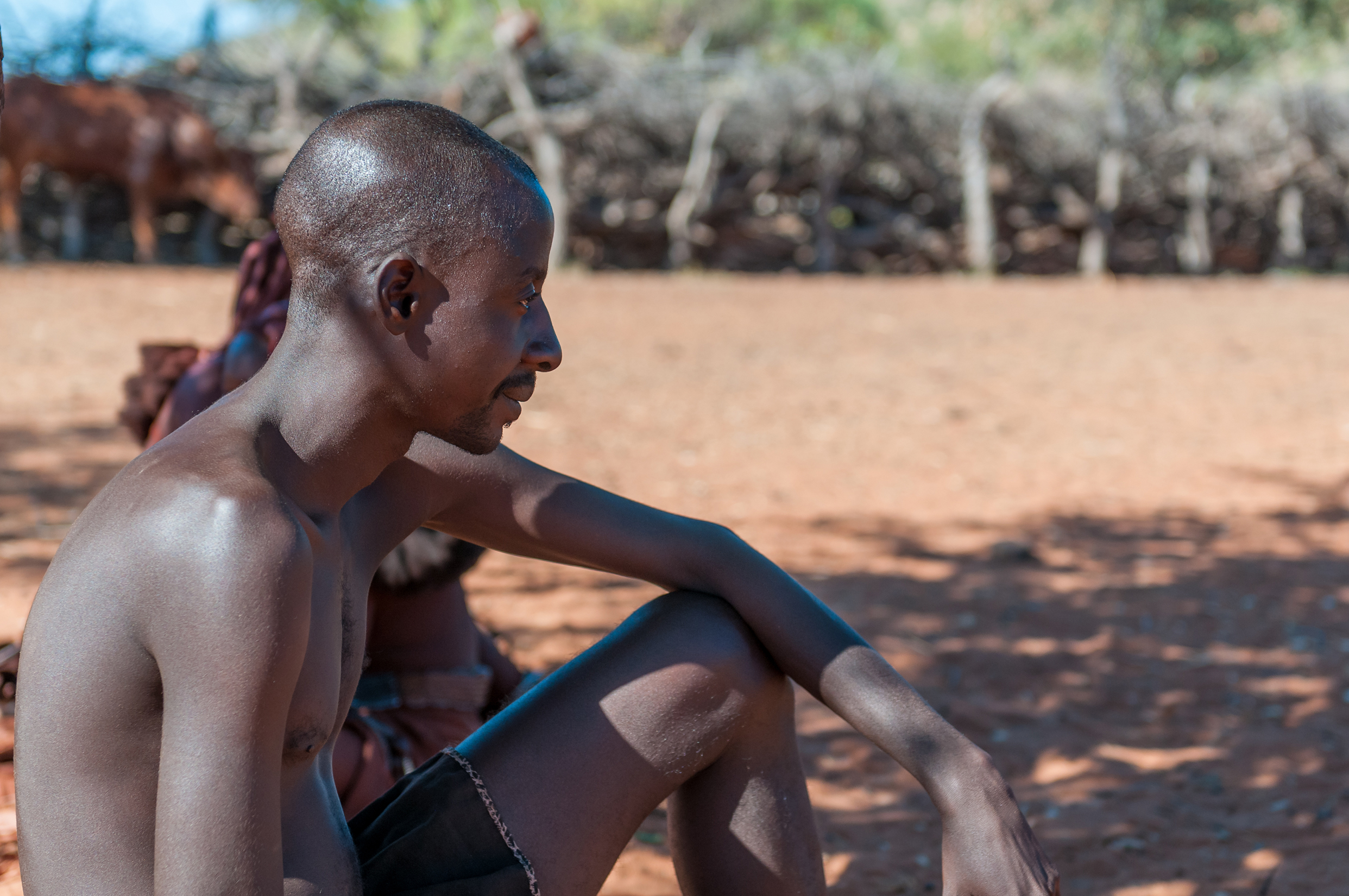 Grobler du Preez, Shutterstock
Grobler du Preez, Shutterstock
Black Magic
The OvaHimba believe in a version of black magic, which they call omiti. Some believe that people can use omiti and cause death or malicious events.
Famous Beauty Regimens
OvaHimba, especially their women, are renowned for their use of the red-tinged otjize paste, which is a mixture of butterfact and ochre. They will often cover their hair with it, and the earthy red is synonymous with beauty in their culture.
Other Otjize Purposes
Otjize also cleans the skin, which is an especially important function when there is water scarcity in Namibia. It also protects the skin from drying out, and deters bug bites.
Hair Decoration
OvaHimba women will also use otjize paste in their hair, giving it a smooth, red cast that acts as decoration and protection.
Hair Styles
From their teen years onward, male OvaHimba will plait their hair into one braid. Girls, meanwhile, will often have multiple braids in their hair. Some of the braids even act as a veil for the women's faces, though for everyday use the braids are pulled back.
Their Clothing
Because of the heat the OvaHimba have to endure in Namibia, most of them wear only a skirt-like garment, usually made from calfskin and sheepskin. These days, the garment is sometimes made from more contemporary textiles.
Their Footwear
Not all OvaHimba wear shoes, but when they do it's often sandals. Women's sandals will be made from cow skin as well, but some men wear sandals made from car tires.
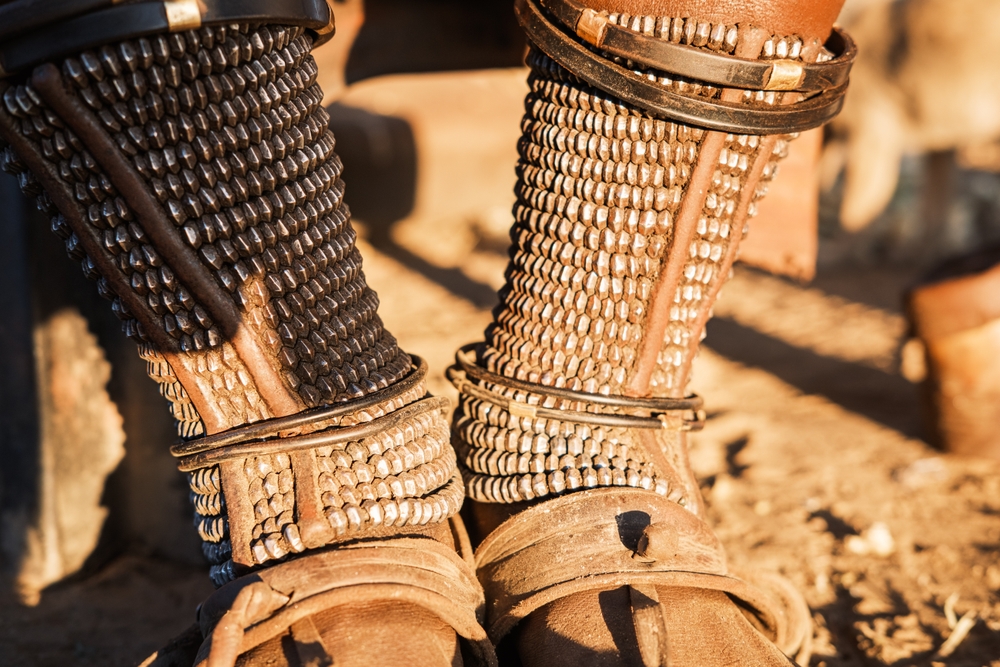 Maurizio De Mattei, Shutterstock
Maurizio De Mattei, Shutterstock
Rites Of Passage
The OvaHimba have several rites of passage, some of which can be detected in their clothing. For example, if a woman has given birth, she will wear a small, animal skin backpack.
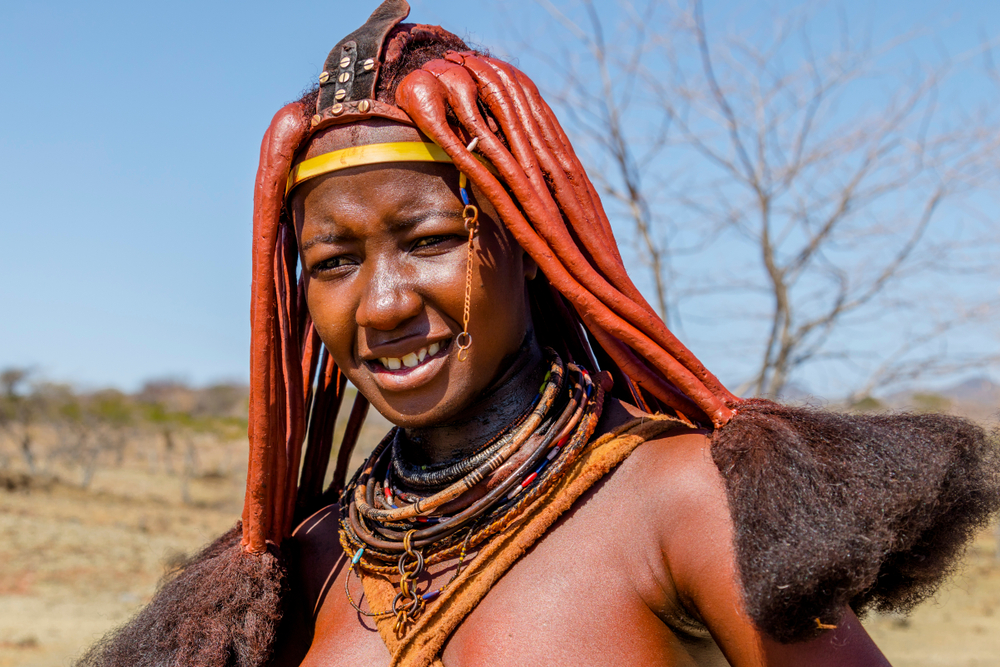 Prisma Nova Photography, Shutterstock
Prisma Nova Photography, Shutterstock
Signalling Marital Status
Marital status is important in Himba culture, and is also often reflected in what they wear. Women who have been married for a year or more, or else who have a child, will wear the Erembe headpiece.
This headpiece is made from sheepskin, and around it they wear many tendrils of braids, colored with otjize paste.
Rituals For Married Men
From their adolescence and into adulthood, OvaHimba men and boys continue to wear the single braid at the back of their head. But married men will wear a cap or head wrap, and keep their hair unbraided underneath it.
Rituals For Widowed Men
If a man becomes a widower, they will remove the head wrap or cap they wore to signify their marriage, exposing the unbraided hair underneath.
Cultural Relationships
Somewhat controversially, OvaHimba traditionally practice polygamy. On average, a man has two wives at the same time.
Arranged Marriages
In addition, the OvaHimba engage in arranged marriages. In these marriages, fathers choose grooms for their daughters, starting around when the girls hit puberty.
Disapproval Of Their Customs
Because the ritual of marrying girls off at puberty means that girls as young as 10 are married, this practice is not popular in Namibia and is even illegal. Certain OvaHimba even reject it, but it nonetheless continues.
Ideas Of Men And Women
According to Himba thought, a boy turns into a man upon marriage. A girl, however, is only a woman when she gives birth to a child.
Bridewealth
Some cultures practice giving dowries, where the bride's family gives money to the groom. However, the OvaHimba arrange marriages through "Bridewealth," where it is the groom's family who gives money to the bride's relatives.
Cattle In Bridewealth
In OvaHimba marriages, most of the bridewealth transactions are of cattle. The cattle must be high quality, and most families tend to offer an ox, though this price can go up if the groom's family is wealthy.
Unusual Color Perception
The OvaHimba group colors into four categories. Zuzu is for dark shades of blue, red, green, and purple. Vapa describes white and some yellows, while buru is for certain shades of green and blue. Finally, dambu is for different shades of green as well as red and brown.
Sharp Eyesight
Because of their lifestyle, the OvaHimba generally have extremely good vision. This is often true of traditional societies, and anthropologists believe this developed in the OvaHimba because of their work with cattle and the need to identify livestock markings.
Access To The Modern World
Many OvaHimba have contact with urban cultures, even though they tend to reside in rural areas. The OvaHimba who live near the Kunene Region capital, Opuwo, even shop at supermarkets and visit doctors there.
Their Language
They speak OtjiHimba, a language within the Bantu family that is prevalent throughout Niger-Congo.
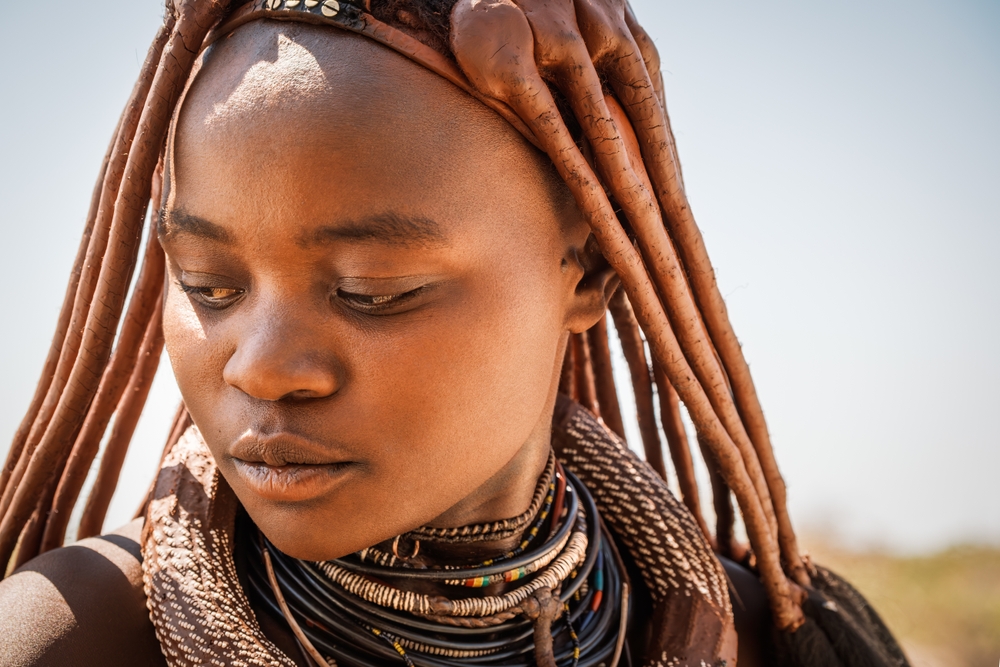 Maurizio De Mattei, Shutterstock
Maurizio De Mattei, Shutterstock
Bilateral Descent
Unlike many cultures around the world, the OvaHimba practice bilateral descent. This means that every Himba member belongs both their father's and their mother's ancestral clan.
Inheritance
Because they practice bilateral descent, inheritance in the OvaHimba is somewhat complex. Wealth doesn't pass down through the father, but rather through the male members of the mother's clan.
That means a son doesn't get his father's wealth. Instead, it passes down from his maternal uncle. Wealth is usually cattle, but also water-points and pastures.
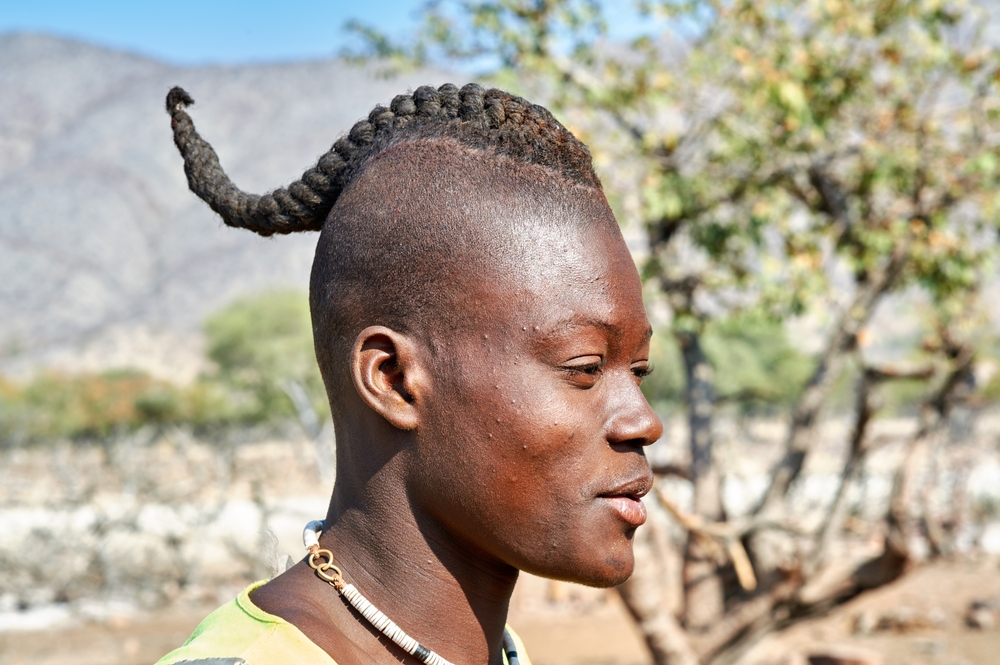 marcobrivio.photography, Shutterstock
marcobrivio.photography, Shutterstock
Advantages Of Bilateral Descent
Bilateral descent is rare in world cultures, and can only be found in West Africa, India, Australia, Melanesia, and Polynesia.
Still, experts believe this system is particularly good for extreme, dangerous environments like the one the OvaHimba live in. That's because it creates multiple kinship support networks over wider areas.
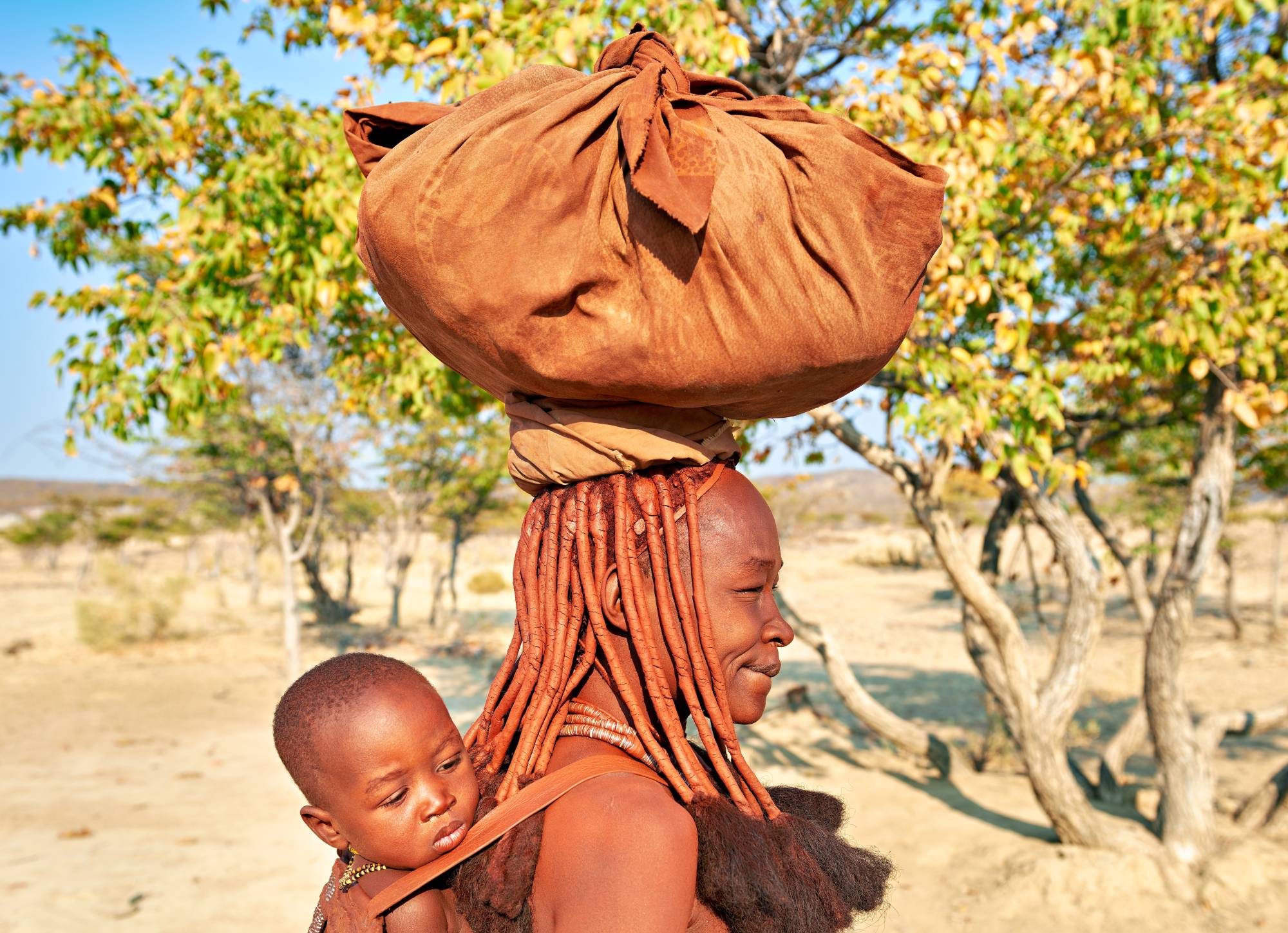 marcobrivio.photography, Shutterstock
marcobrivio.photography, Shutterstock
Family Clan Units
Sons are born in and continue to live with their father's clan in death. When daughters marry, however, they go over to their new husband's clan.
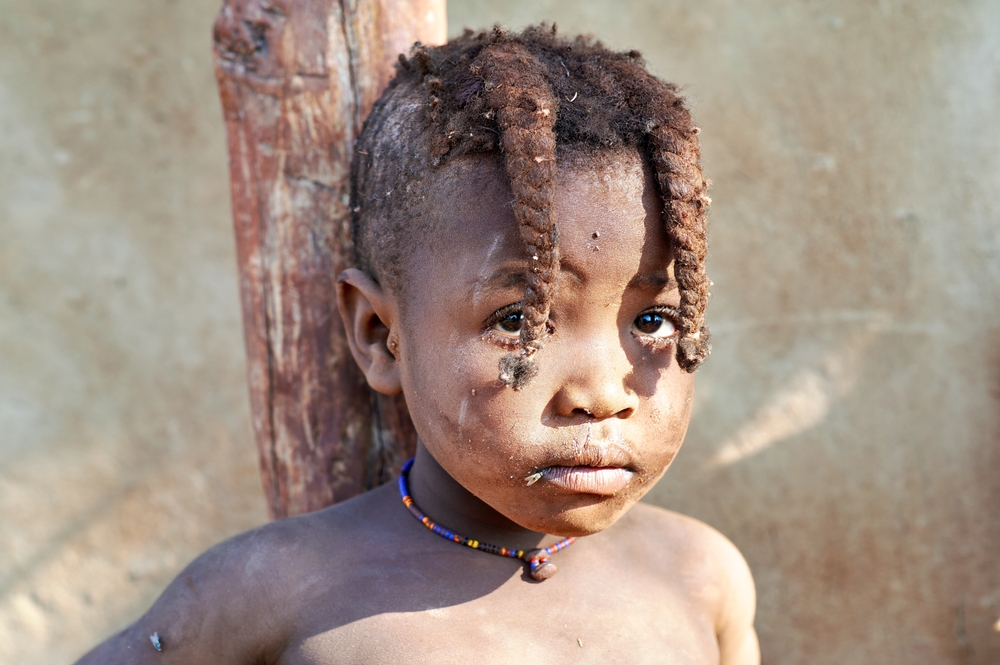 marcobrivio.photography, Shutterstock
marcobrivio.photography, Shutterstock
Clan Leader
OvaHimba clans have a leader, who is always the oldest male in the clan.
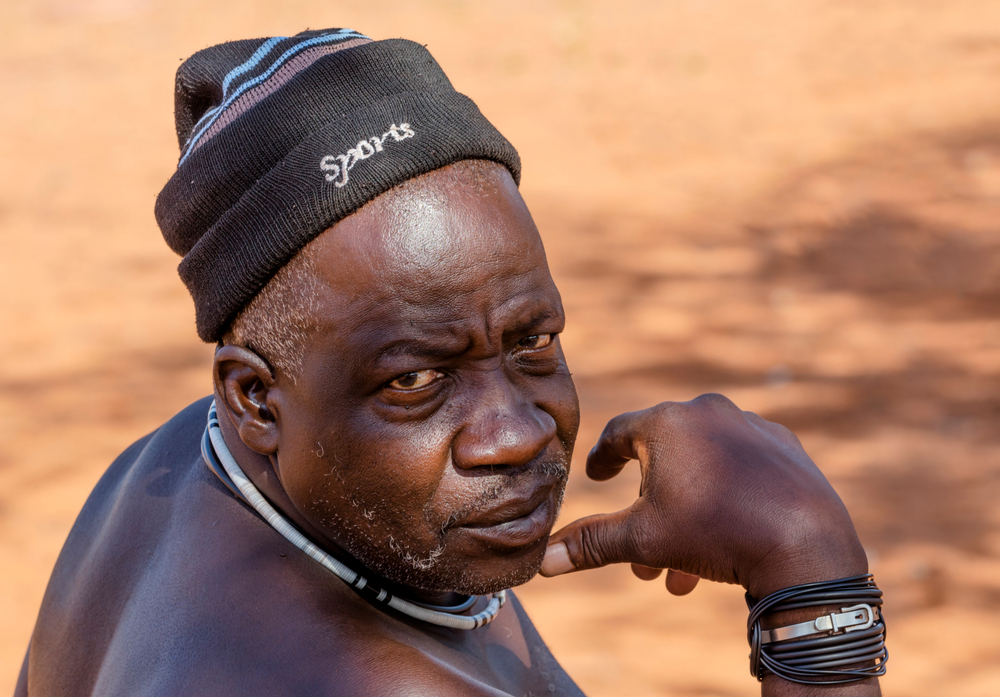 Prisma Nova Photography, Shutterstock
Prisma Nova Photography, Shutterstock
Near Extinction
In the 1980s, the OvaHimba's traditional way of life nearly got wiped out. Thanks to political conflicts and a severe drought that killed the vast majority of their cattle, many OvaHimba gave up rural life entirely to become refugees in nearby towns.
Their survival today is a testament to the remaining OvaHimba commitment to their culture.
Final Thoughts
From their marriages, to their religious beliefs, to their beauty practices, the OvaHimba are living a life rooted in the old traditions of their sacred ancestors. It's a testament to their drive for survival, both physical and cultural.

